THE GRANADA THEATRE CIRCUIT
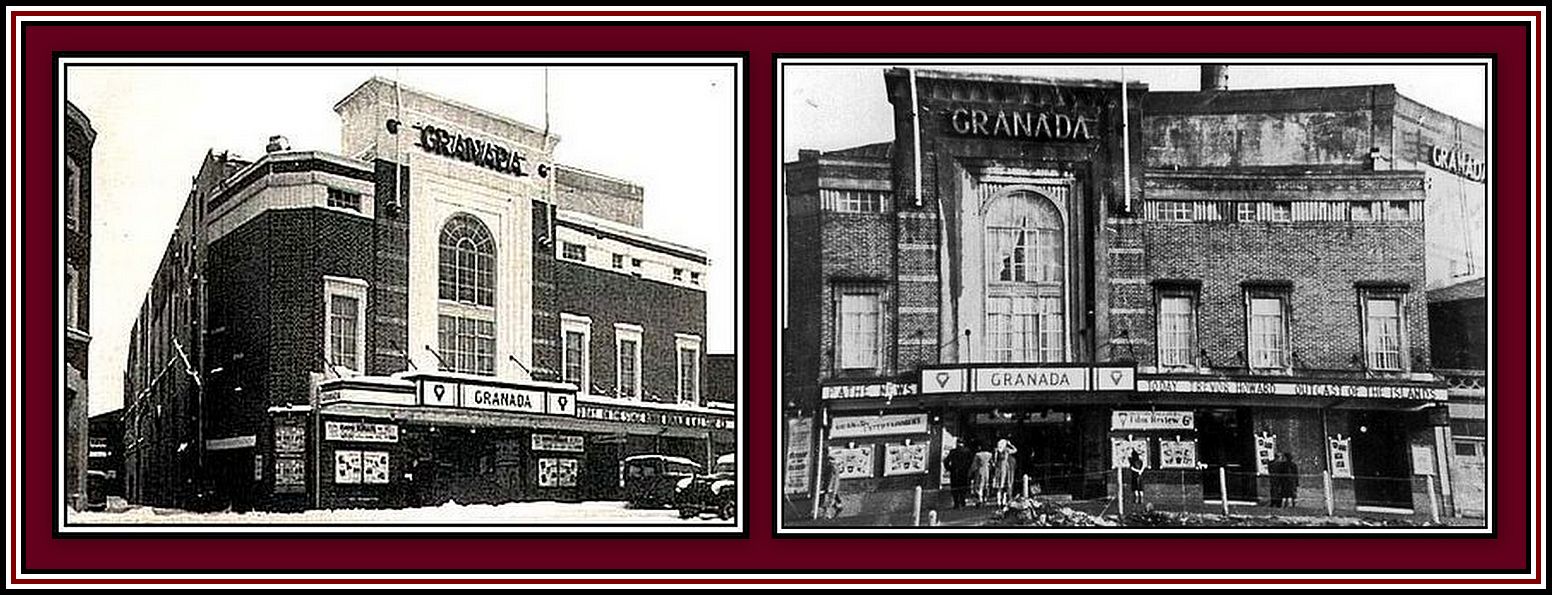 The Granada Dover The first new Granada Theatre built especially for Sidney Bernstein and the Circuit
The Granada Dover The first new Granada Theatre built especially for Sidney Bernstein and the Circuit
-oOo-
PART FOUR: THE GIANTS THAT MADE GRANADA GREAT
-oOo-
THEODORE KOMISARJEVSKY
I have learned the Russian script for his name is:
Фёдор Фёдорович Комиссаржевский
I would like to thank Mr. Adrian Hindle-Briscall for this information.
-oOo-
Komisarjevsky was a fascinating character, who looked like a little monk, who was completely bald and with the most enchanting smile. He had an impish, rather wicked humour, but was prone to ‘Prussian moods’ when things were not going well, when he would maintain a grim silence. He loved young people especially if he thought they had talent. He really was a man of remarkable all-round talents. He knew about lighting, architecture, scenery, and had a wonderful sense of movement. But he was also extremely perverse and unpredictable. Money did not seem to interest him very much, however, and he often agreed to work quite cheaply.
Quotes From An Actor and His Time by John Gieldgud
-oOo-
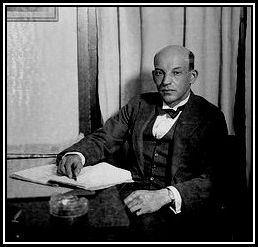 Theodore Komisarjevsky …. or as the London theatre stagehands called him … Come and Seduce Me … which apparently amused him very much!
Theodore Komisarjevsky …. or as the London theatre stagehands called him … Come and Seduce Me … which apparently amused him very much!
Fyodor Fyodorovich Komissarzhevsky (Russian: Фёдор Фёдорович Комиссарже́вский) or Theodore Komisarjevsky, as he was better known outside Russia, led an interesting and controversial life before turning to theatre design and working with Sidney Bernstein and The Granada Theatre Circuit.
Theodore Komisarjevsky was born in Venice on 23rd May, 1882 and brought up in Moscow and was surrounded by, and immersed in, the theatre throughout his early life since his father, Fyodor Petrovich Komissarzhevsky, was an opera singer and his mother, an actress.
-oOo-
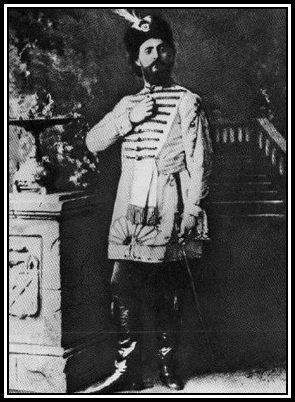 Fyodor Petrovich Komissarzhevsky (1832-1905)
Fyodor Petrovich Komissarzhevsky (1832-1905)
His father, Fyodor Petrovich Komissarzhevsky (Russian: Фёдор Петро́вич Комиссарже́вский) was also a colourful character who appeared to live his life very much on his own terms. He was a leading tenor at the Mariinsky Theatre in St. Petersburg, where he created a number of roles in Russian operas, including one by Tchaikovsky whom he had befriended early in the composer’s career. Komissarzhevsky remained at the Mariinsky Theatre until 1880 and then moved to Moscow where he sang at the Bolshoi Theatre, as well as directing several operas there. After he retired from the stage, he taught singing and acting at the Moscow Conservatory between 1883 and 1888. One of his students was Constantin Stanislavsky, who had originally hoped to become an opera singer. When Stanislavsky founded the Society of Art and Literature in 1888, Komissarzhevsky became the first head of the operatic and musical section of its school. However, his tenure there lasted for one year and he later moved to Italy where he lived until his death in 1905 at San Remo. He is buried in the Protestant Cemetery in Rome.
Fyodor Petrovich Komissarzhevsky’s first marriage was to one of his pupils, Mariya Nikolaevna Shulgina, who was the daughter of a war hero. They married in spite of her father’s objection and had four children. Their eldest daughter, Vera Komissarzhevskaya (Russian: Ве́ра Фё́доровна Комиссарже́вская), was born in 1864 and was to become a leading Russian actress and originated the role of Nina in Anton Chekhov’s The Seagull in 1896. The three other children were named Olga, Nadezhda and a son Grisha who drowned when he was six years old. This tragedy was latter incorporated by Anton Chekhov into his play, The Cherry Orchard (1904).
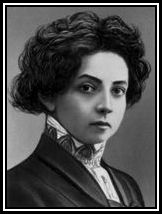 Vera Komissarzhevskaya (1864-1910) – who originated the role of Nina in The Seagull
Vera Komissarzhevskaya (1864-1910) – who originated the role of Nina in The Seagull
In 1880, Komissarzhevsky abandoned his first wife for his mistress, Princess Mariya Kurtsevich, who had also been one of his pupils. By 1882, she was pregnant with their son, Fyodor Fyodorovich (later Theodore). His first wife agreed to a divorce and also agreed to be cited as the guilty party so that Komissarzhevsky and his mistress could marry and their child legitimised. They had other children including another boy, Nikolai, who became a writer, and remained in Russia and was executed in 1938 during Joseph Stalin‘s Great Purge.
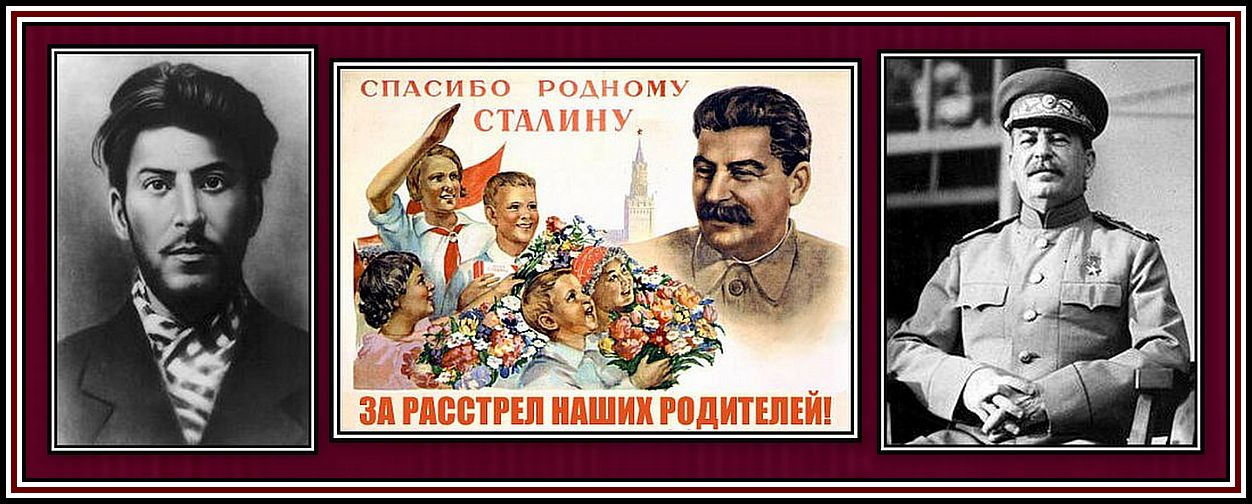 Josef Stalin through the years – Red Terror
Josef Stalin through the years – Red Terror
Eventually, this second marriage came to an end and Komissarzhevsky seems not to have married again. He did however enter into correspondence with both his first wife and eldest daughter, Vera, who often visited him at his in Italy.
-oOo-
Theodore Komisarjevsky was educated at a military academy and the Imperial Institute of Architecture in St Petersburg. He began directing plays in 1910 in his sister’s theatre and eventually formed an acting school where he was to practice his own theories on acting. In 1917, he became the director of the Bolshoi Ballet, however Comrade Lenin was not inclined towards the theatre and suggested that they all be closed!
L’Internationale – in Russian
L’Internationale – in Chinese
Believing himself to be on the point of being arrested, Mr. Komisarjevsky left the U.S.S.R. and went to Paris where many Russians had settled. Here the ballet impresario Diaghilev (Serge Pavolovich Diaghilev; Russian: Серге́й Па́влович Дя́гилев) suggested that he move to London.
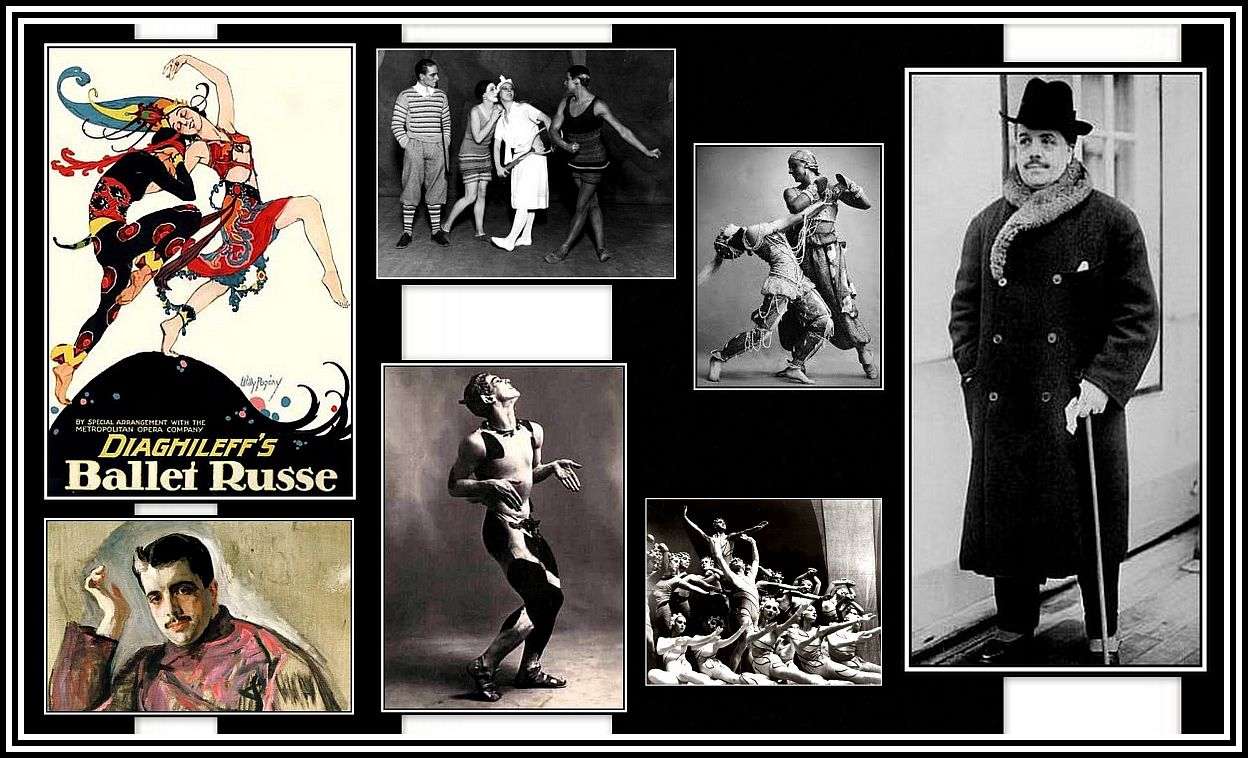 Diaghilev et Le Ballet Russe
Diaghilev et Le Ballet Russe
Mr. Komisarjevsky arrived in London in 1919 as an émigré. Within four weeks of his arrival, Sir Thomas Beecham allowed him to direct a production of Prince Igor at Covent Garden.
This led to his working on additional opera productions in both Paris and New York. On his return to London he began work on a number of productions of plays by Russian authors including Chekhov, Gogol, Andreyev, Tolstoy, and Dostoyevsky.
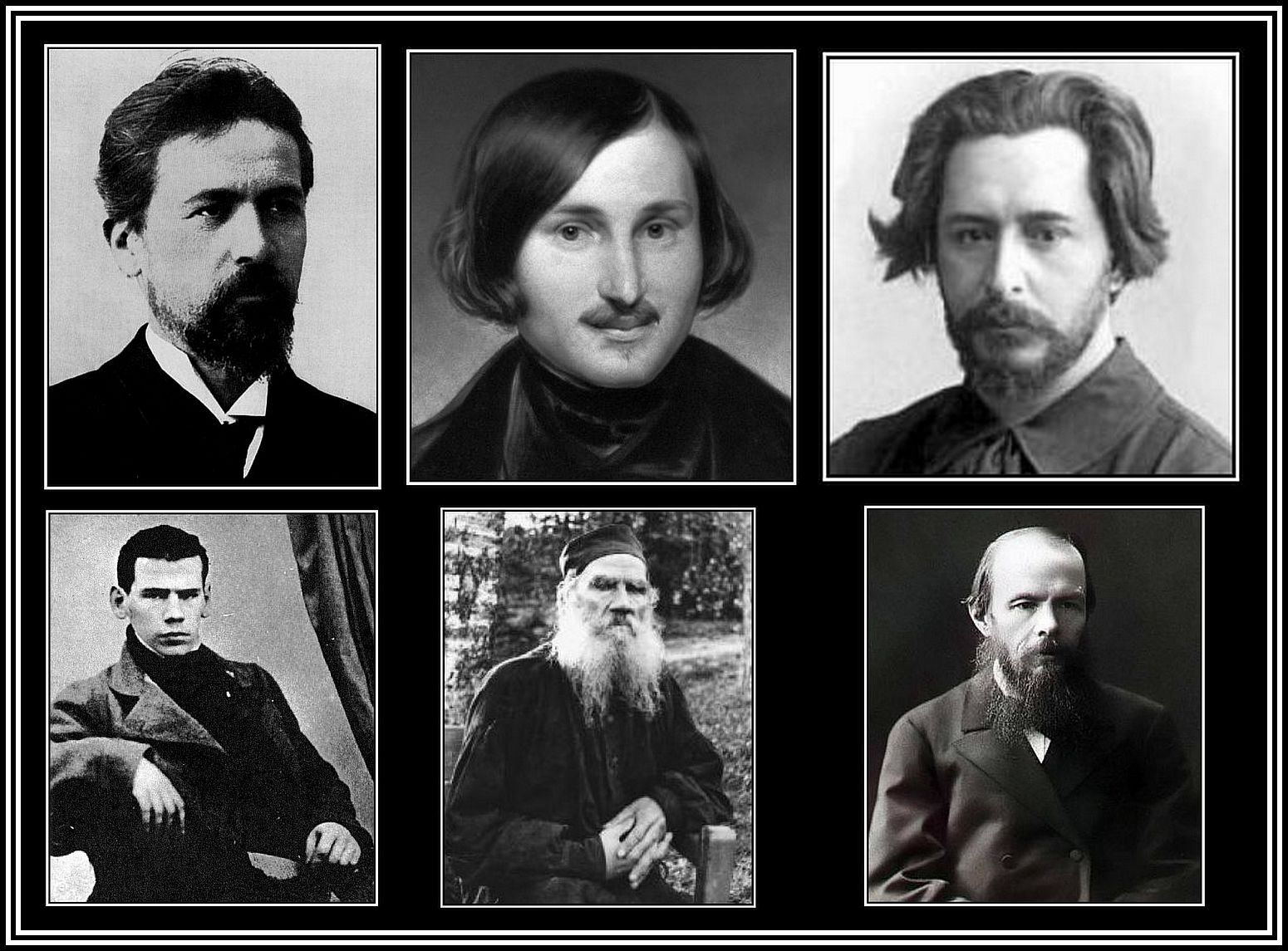 Top Row, left to right: Chechov, Gogol & Andreyev
Top Row, left to right: Chechov, Gogol & Andreyev
Bottom Row, left to right: Young Tolstoy, Old Tolstoy & Dostoyevsky
In June 1921, together with the Russian tenor, Vladimir Rosing, and conductor, Sir Adrian Boult, they presented a season of Opera Intime at London’s Aeolian Hall that was well received.
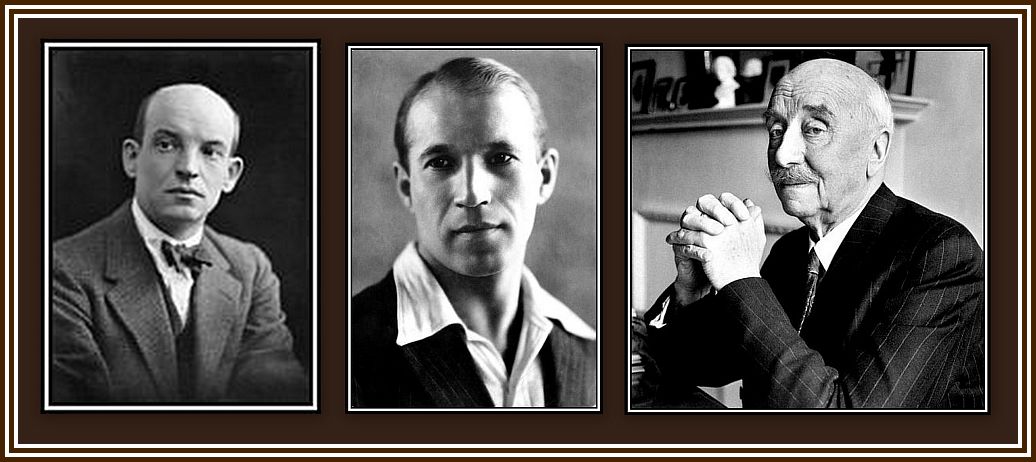 Left: Theodore Komisarjevsky; Middle: Vladimir Rosing; Right: Sir Adrian Boult
Left: Theodore Komisarjevsky; Middle: Vladimir Rosing; Right: Sir Adrian Boult
“….. steeped in the artistic notions that have made the Moscow Art Theatre, for Mr. Rosing, the ensemble is the thing. There can be no such thing as a star. For him opera at its basic must be the *Synchronisation of all the arts — orchestral, vocal, dramatic, scenic, decorative.”
Time Magazine, December 26, 1927.
*Synchronisation was a philosophy fully embranced by Mr. Komisarjevsky in all aspects of his career.
Mr. Komisarjevsky enjoyed perhaps his greatest success as a stage director after 1925. At this time, he took over a small cinema in Barnes in suburban London, which he converted into a theatre and where with his own company of actors that included John Gielgud and Charles Laughton, he practically transformed English theatre with his season of Chekhov plays. Up until this then, English stage acting was frivolous, lacking depth. He introduced to his performers to what has come to be known as The Method. His approach to acting required the actor to induce an intensity of feeling and a deeper understanding of the characters that they played. This approach was based on the acting theories of Stanislavsky, however Mr. Komisarjevsky did not accept all accepts of Stanislavsky’s ideas.
Mr. Komisarjevsky no doubt had boundless energy for he was involved in an amazing number of projects during the late 1920s and 1930s:
- In addition to directing stage plays, in 1928 he directed what seems to be his one and only film, the silent film, Yellow Stockings, which was set in Paris and based on a novel by Wilson McArthur. The story was of a young woman who after finding herself an heiress becomes besieged by fortune hunters. The film was made at Cricklewood Studios and was distributed by Paramount Pictures.
- He also lectured at the Royal Academy of Dramatic Art where he exerted a strong influence on acting students who later were to receive worldwide acclaim. Both Charles Laughton and John Gielgud attended his classes and he also directed plays with Donald Wolfit, Christopher Plummer and Peggy Ashcroft whom he married in 1934.
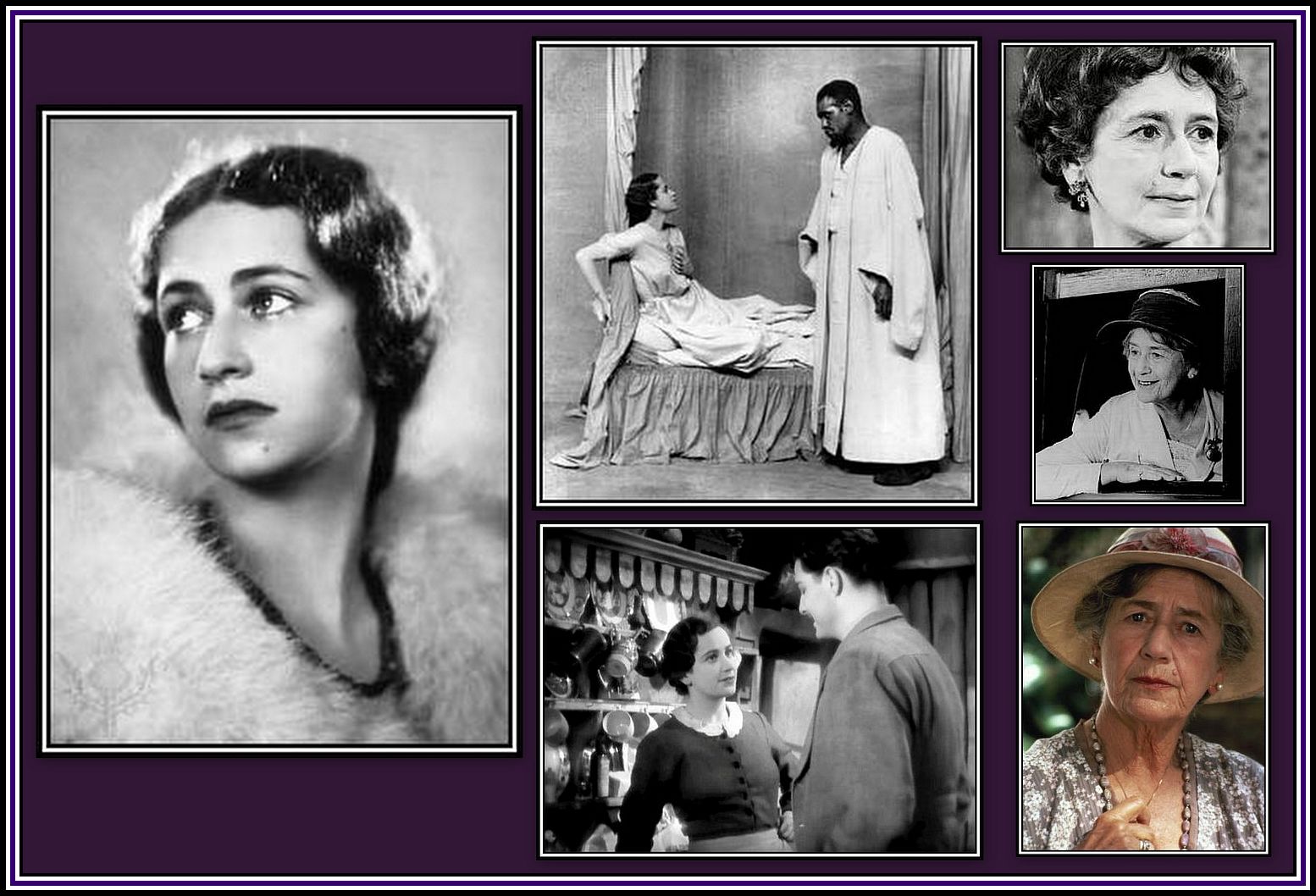 Peggy Ashcroft through the years
Peggy Ashcroft through the years
Upper Middle: with Paul Robeson in Othello;
Lower Middle: with Robert Donat in Alfred Hitchcock’s film, The Thirty Nine Steps
 Left to Right: Charles Laughton, John Gielgud, Donald Wolfit & Christopher Plummer
Left to Right: Charles Laughton, John Gielgud, Donald Wolfit & Christopher Plummer
- In 1932, he wrote the defining book, The Costume of the Theatre, which he dedicated to his father. Since then, it has been reprinted numerous times.
- Throughout his stage direction career, he continued to advocate his avant garde approach to acting. In 1934, he scandalised society with his productions of Shakespeare plays where, for example, his staging of Macbeth at Stratford-Upon-Avon featured an abstract aluminum set, sparse lighting and extravagant costumes where Lady Macbeth wore a crown of saucepan lids. In 1937, he received box office success with his staging of King Lear. Mr. Komisarjevsky said that for this production, he chose to set the action outside time and beyond geography. Some others have said that his weakness as a Shakespearian producer lay in the fact that he had little respect for the text and small appreciation of the rhythms of the verse.
Mr. Komisarjevsky was a major force in theatre and embraced all aspects of theatre art. His influence was felt throughout the theatre world and by the 1930s, he was recognised as being one of the most colourful figures in European Theatre.
Mr. Komisarjevsky was not attracted to the West End stage. However, the imprisario, Sir Charles Cochran, did persuade him to produce several plays for him. His taste lay more in the avant garde and this caused him to work on a variety of plays that were presented to audiences throughout Britain and the continent in any theatre or for any theatre society where current theatrical trends and tastes were not followed. As a result, his productions were both provocative, and I am sure, interesting. Included in his many productions was his staging of Ibsen’s play, The Pretenders, which was presented in Welsh in a gigantic marquee at Holyhead and A.A. Milne’s The Dover Road, presented in English, in Paris.
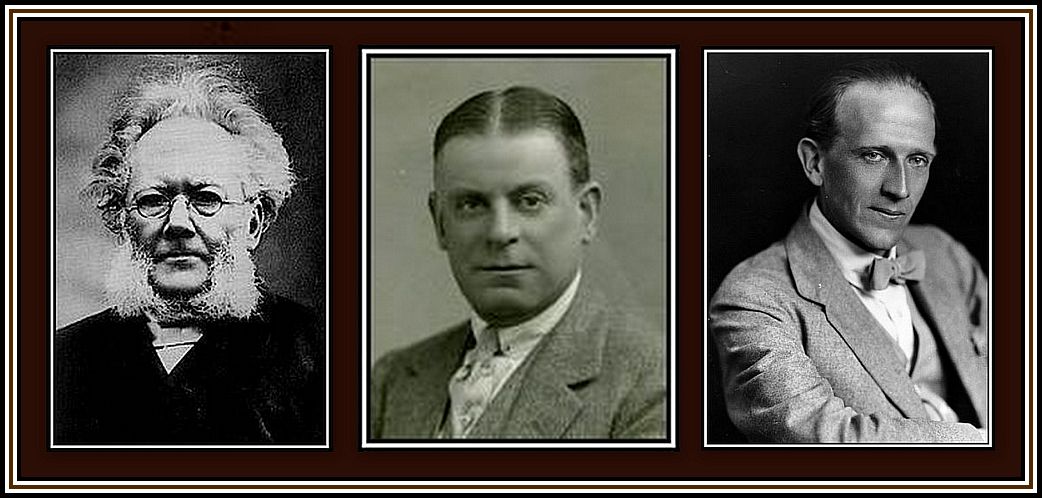 Left to Right: Henrik Ibsen, C.B. Cochran & A.A. Milne
Left to Right: Henrik Ibsen, C.B. Cochran & A.A. Milne
He also was a remarkable stage designer and invariably designed his own sets and costumes. His sets favoured mood rather than detail. He displayed a brilliance in his use of lighting where he was able to emphasise subtlety and drama through its skillful use.
On a more personal note, Mr. Komisarjevsky married three times. His first marriage was to Elfriede de Jarosy and his second, in 1934, to actress Peggy Ashcroft. Although both of these earlier marriages ended in divorce, his third marriage to Ernestine Stodelle proved to be more enduring.
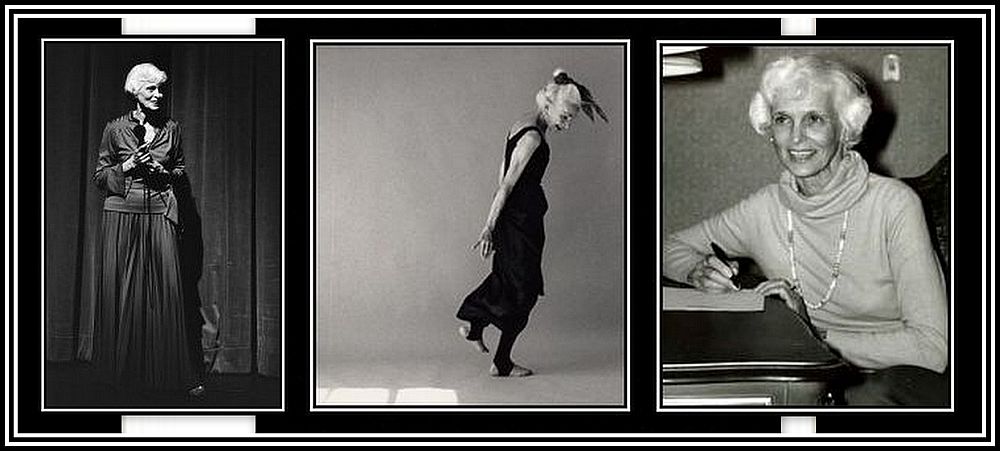 Ernestine Stodelle through the years
Ernestine Stodelle through the years
Ms Stodelle was a renowned dancer, teacher and writer. They met apparently in New York while Mr. Komisarjevsky was engaged to Ms Ashcroft. Ms Stodelle was often paired with Jose Limón during her early performing years. In later life, she helped preserve many early modern works through her teaching and maintained a dance studio at her in Cheshire, Connecticut. She also reviewed dance and wrote books on Martha Graham and Doris Humphrey. Ms Stodelle and Mr. Komisarjevsky had two sons and one daughter and remained together until his death in 1954.
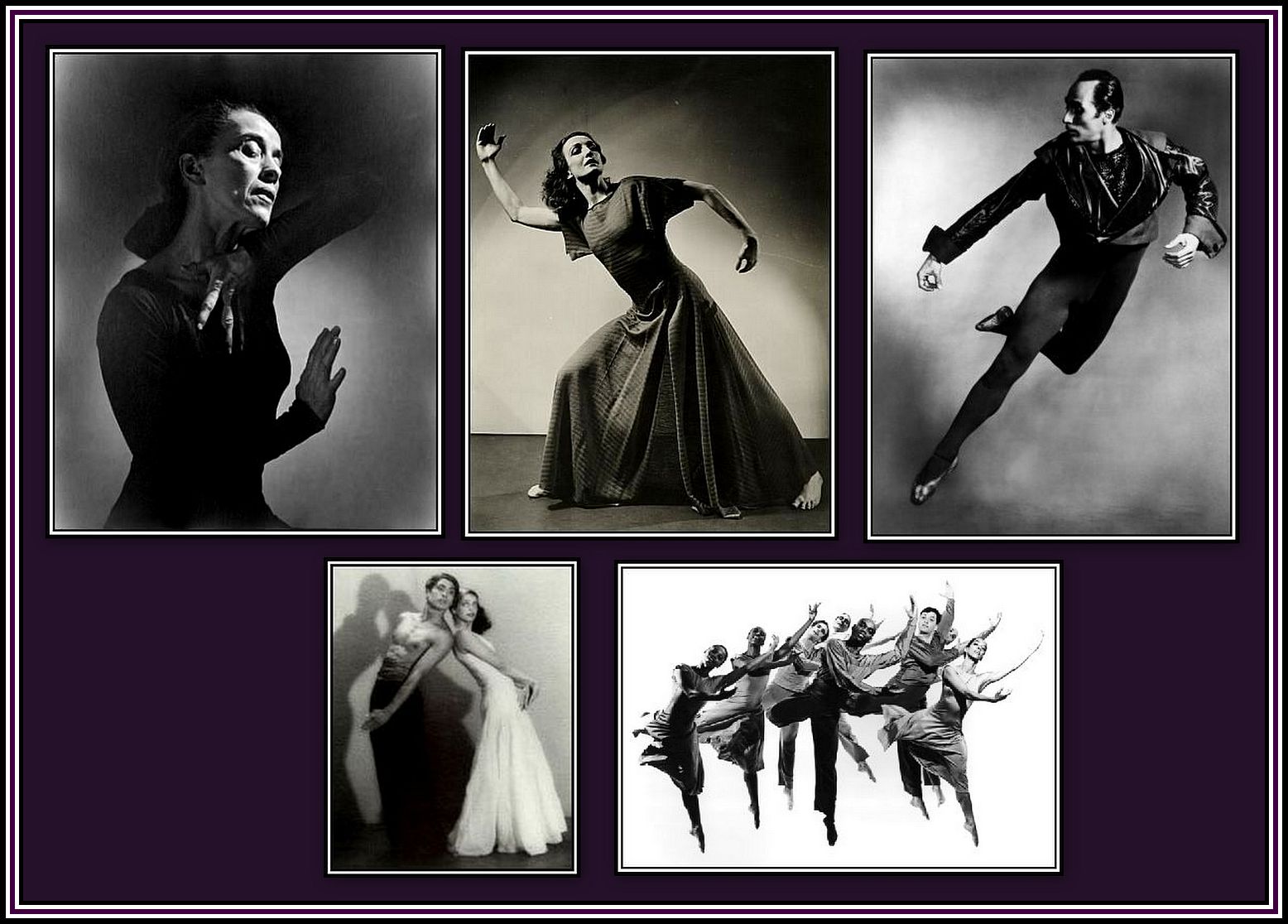 Influential Dancers of the 20th Century
Influential Dancers of the 20th Century
Top Row from Left to Right: Martha Graham (click here to watch a documentary on her work; the narrator of the video is Ernestine Stodelle), Doris Humphrey & Jose Limón
Bottom Row from Left to Right: Jose Limón and Doris Humphrey & The Jose Limón Dance Troupe
-oOo-
Regarding the physical appearance and demeanour of Theodore Komisarjevsky ……. I will quote here from the writings of Mr. Normal Marshall:
Mr. Komisarjevsky was a small man, completely bald, with a beak nose and inscrutable brown eyes set in a pale face which seemed all the paler because of the small bright red scarf which he invariably wore at rehearsals. His rather melancholy air concealed a mischievous sense of humour which had a streak of cruelty in it. At work he was the quietest of producers. He would seldom give an actor an intonation or say how a line should be spoken. He preferred to discuss what a character was thinking or feeling, and leave it to the actor to work it out. Unfortunately, if he decided that an actor had no particular talent he took no trouble over his performance but concentrated all his attention on the better actors; so under his direction good actors usually surpassed themselves while dull actors seemed duller than ever.
-oOo-
Despite his influence on all aspects of the theatre arts, it is perhaps for his sorties as a theatre designer that he is best remembered today.
-oOo-
I must confess that I would like to know exactly how Sidney Bernstein and Theodore Komisarjevsky came to work together. Unfortunately, I can not find anything written about their initial meeting.
What follows next, is pure conjecture …… pure supposition on own part …… and represents nothing more than my own opinion. Unfortunately, I have found nothing written on this subject …… more’s the pity! I would have loved to have been a fly on the wall at their meetings, as I believe they were something special. Although certainly not on a par with the meeting of Pope Leo I and Attilla The Hun or even that of Neils Bohr and Werner Heisenberg, orlike the meeting(s) between Dame Sybil Sidwell and Marilyn Monroe, I am sure they were of note and definitely of interest.
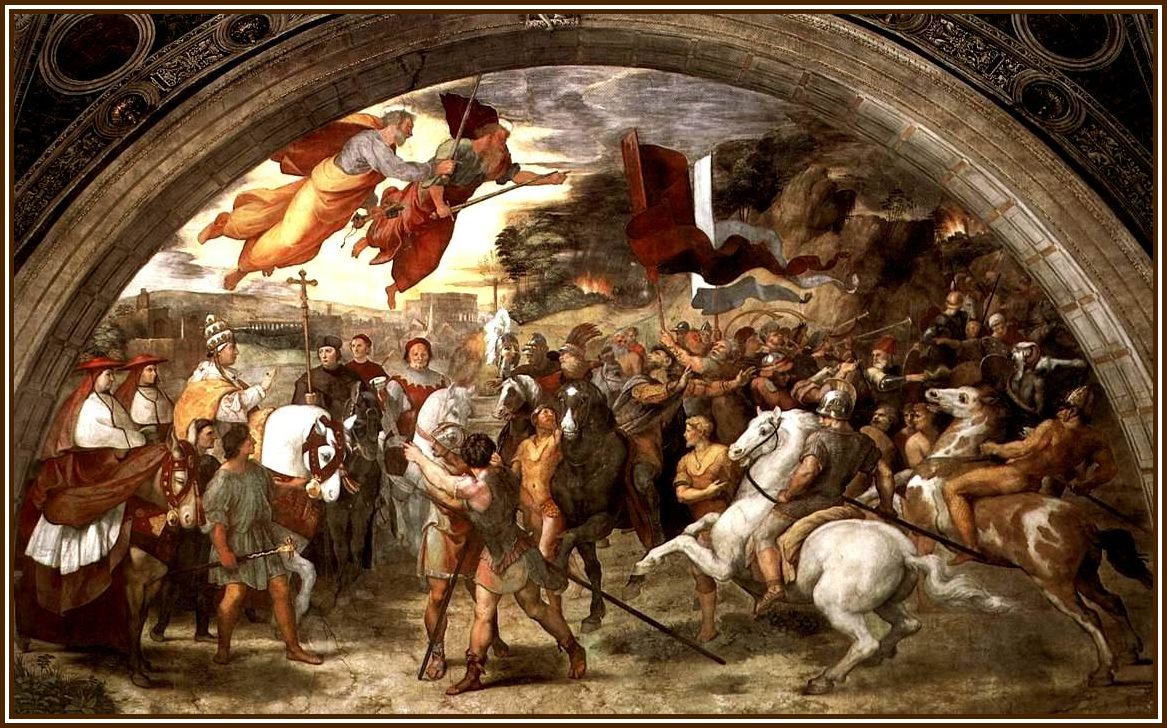 The Meeting of Pope Leo I & Attilia the Hun
The Meeting of Pope Leo I & Attilia the Hun
This is a fresco by Raphael and his assistant Giulio Romano. It was painted in 1514 as part of Raphael’s commission to decorate the rooms that are now known as the Stanze di Raffaello, in the Apostolic Palace in The Vatican
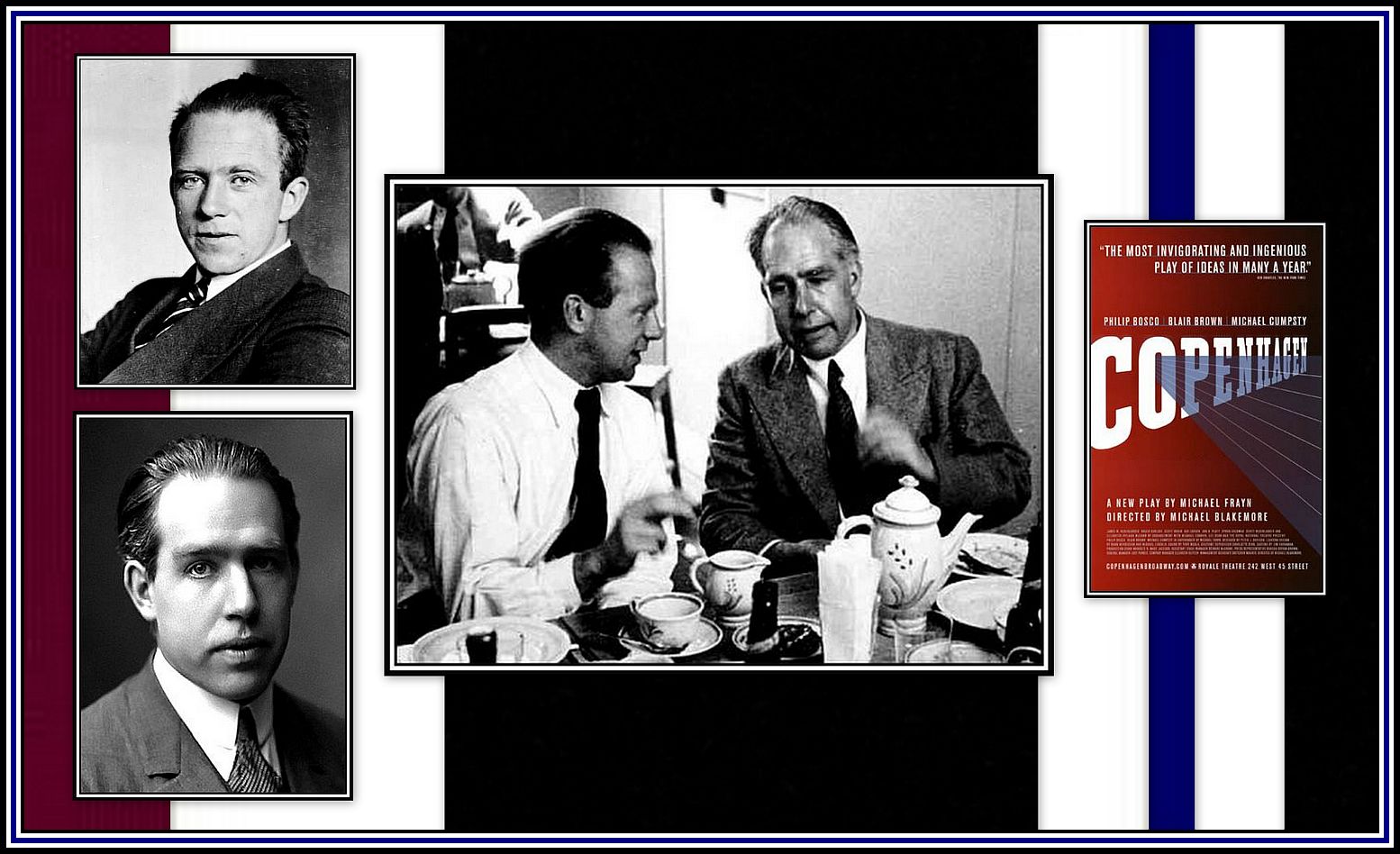 Neils Bohr & Werner Heisenberg
Neils Bohr & Werner Heisenberg
Top Left: Werner Heisenberg; Bottom Left: Neils Bohr Centre: Enjoying a chat and a cup of tea in Copenhagen in 1941, which was the setting for the play, Copenhagen by Michael Frayn presented first in 1998. The play attempts to encapsulate something about the difficulty of knowing why people do what they do and there is a parallel between that and the impossibility that Heisenberg established in physics, about never being able to know everything about the behaviour of a physical object (The Uncertainty Principle)
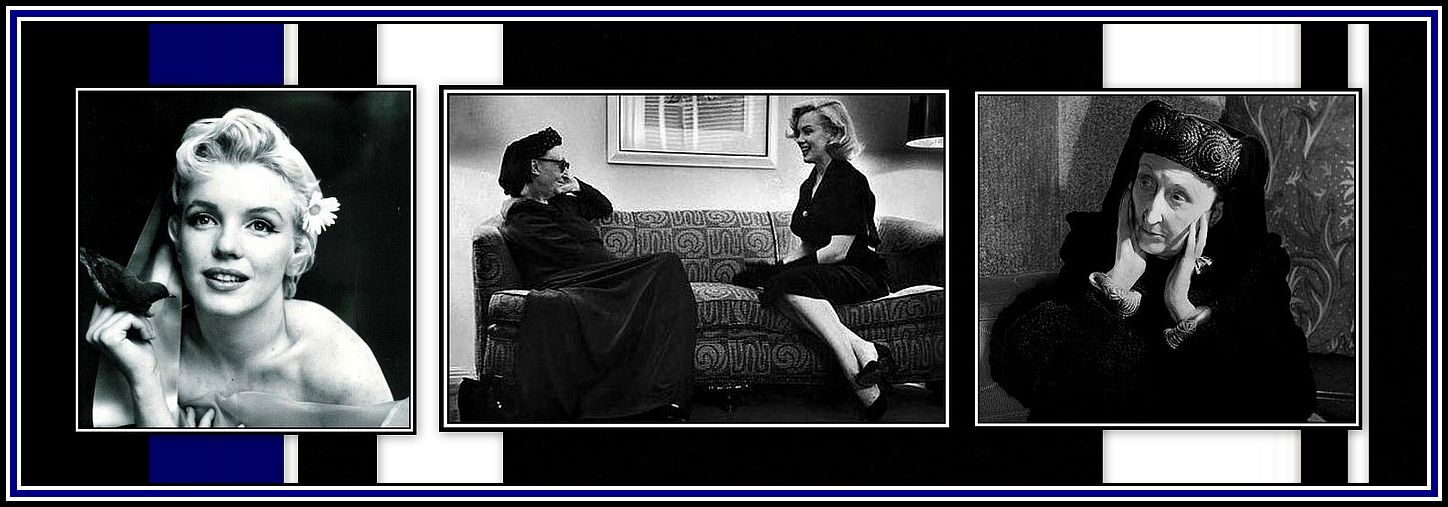 Dame Edith Sitwell & Marilyn Monroe
Dame Edith Sitwell & Marilyn Monroe
Both Sidney Bernstein and Theodore Komisarjevsky were obviously driven men and dedicated to their work. Both were obviously colourful figures with a flair for showmanship. I believe that hitting on the idea of having Mr. Komisarjevsky to redecorate some of his old Music Halls had more than a touch of P.T. Barnum at its root. However, I feel duty bound to also say that I more than suspect Mr. Bernstein as having hidden depths. I believe that he was a great deal more cultured than we might think from a cursory glance at his 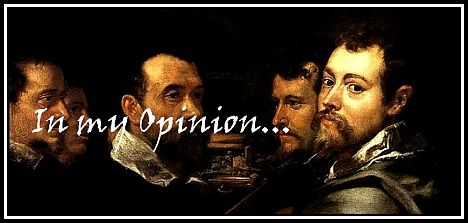 life. After all, he had traveled extensively and appreciated fine and spectacular architecture. He had met educated and prominent people from all walks of life and from many countries. Although his major interests lay in all aspects of film, this is not such a far cry from theatre. I feel certain that during his dealings with the film industry, he no doubt met many people from the theatre world. Mr. Bernstien was a shrewd business man having a keen eye recognising a good opportunity whenever one presented itself. However, he also knew when a once-golden-opportunity had run its course and had its day, and when it was time to move on. He recognised when Music Hall had run its course and later when going to the pictures had lost its audience.
life. After all, he had traveled extensively and appreciated fine and spectacular architecture. He had met educated and prominent people from all walks of life and from many countries. Although his major interests lay in all aspects of film, this is not such a far cry from theatre. I feel certain that during his dealings with the film industry, he no doubt met many people from the theatre world. Mr. Bernstien was a shrewd business man having a keen eye recognising a good opportunity whenever one presented itself. However, he also knew when a once-golden-opportunity had run its course and had its day, and when it was time to move on. He recognised when Music Hall had run its course and later when going to the pictures had lost its audience.
 When Opportunity Knocks (with Hughie Green) ……. open the door and let it in!
When Opportunity Knocks (with Hughie Green) ……. open the door and let it in!
Although it is my view that Mr. Bernstein appreciated that working with such an intellectual and controversial figure as Theodore Komisarjevsky would certainly bring prestige to his organisation and would cause a certain curiosity in the public to see the result of such a collaboration, I am also of the strong opinion that no matter how intellectual or controversial a figure Mr. Komisarjevsky was, their collaboration would not have lasted had Mr. Komisarjevsky not had an enormous talent in an area that was of value to Mr. Bernstein.
At the time when Sidney Bernstein began to renovate his Music Halls and cinemas, and eventually build new theatres, his contemporaries were building their cinemas and theatres in modern style. However, Mr. Bernstein was of the strong opinion that audiences wanted cinemas to be cathedral-like with palatial décor. And this he gave to the public – awe-inspiring temples of entertainment at prices within their reach. And this was achieved through the imagination, dedication and talent of Theodore Komisarjevsky.
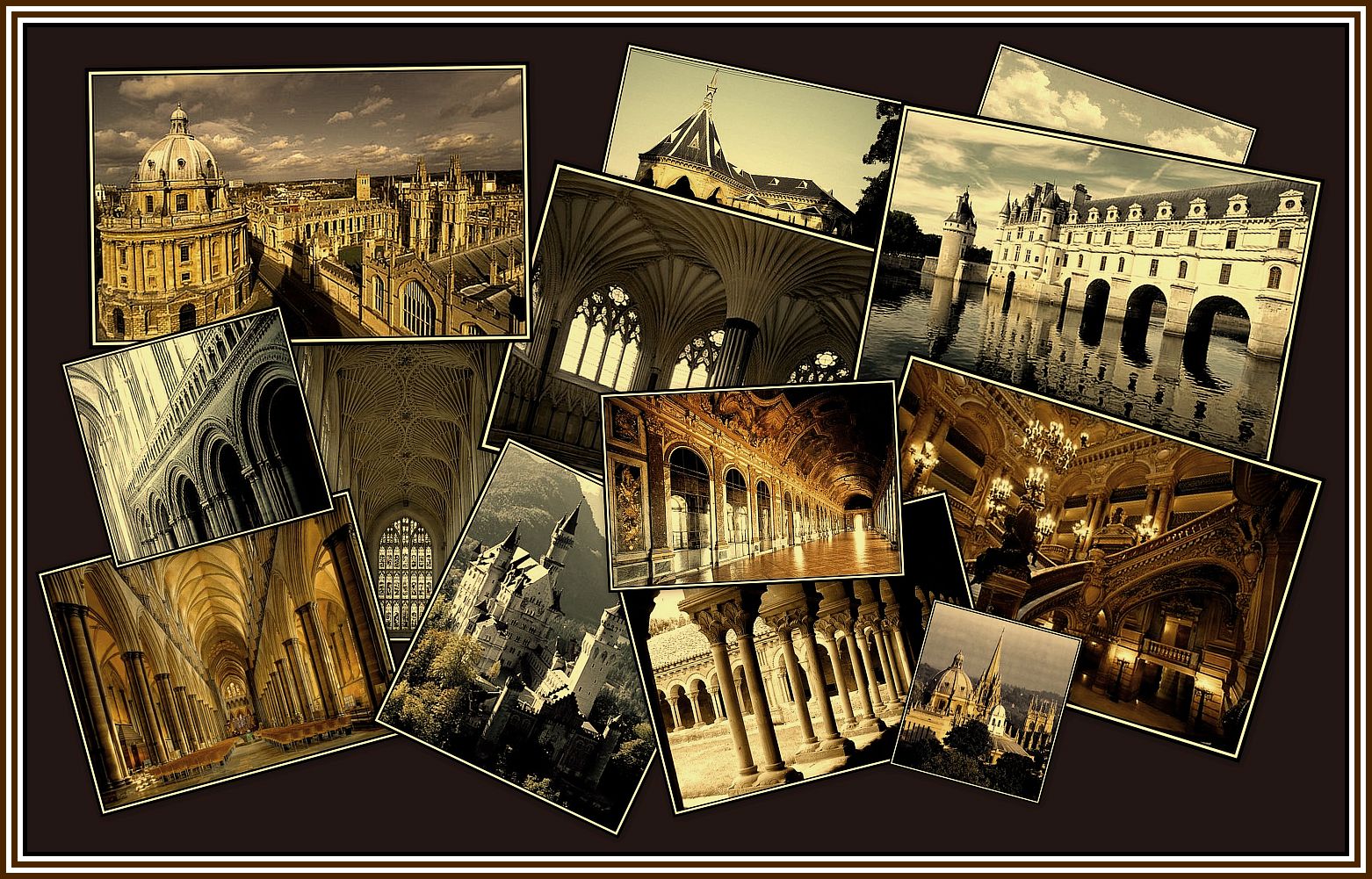 Cathedrals, Palaces & Dreamy Spires
Cathedrals, Palaces & Dreamy Spires
-oOo–
In 1927, and possibly influenced by Mr. Komisarjevsky, Mr. Bernstein made a foray into the legitimate theatre by forming Sloane Productions in partnership with Arnold Bennett. The company leased the Royal Court Theatre where it enjoyed some with the staging of Mr. Bennett’s play, Mr. Prohack, based on his novel. However, the venture ended in 1928, as it proved not to be a financial . Mr. Bernstein was after all a business man and obviously a realist and evidently knew when it was time to cut his losses and move on.
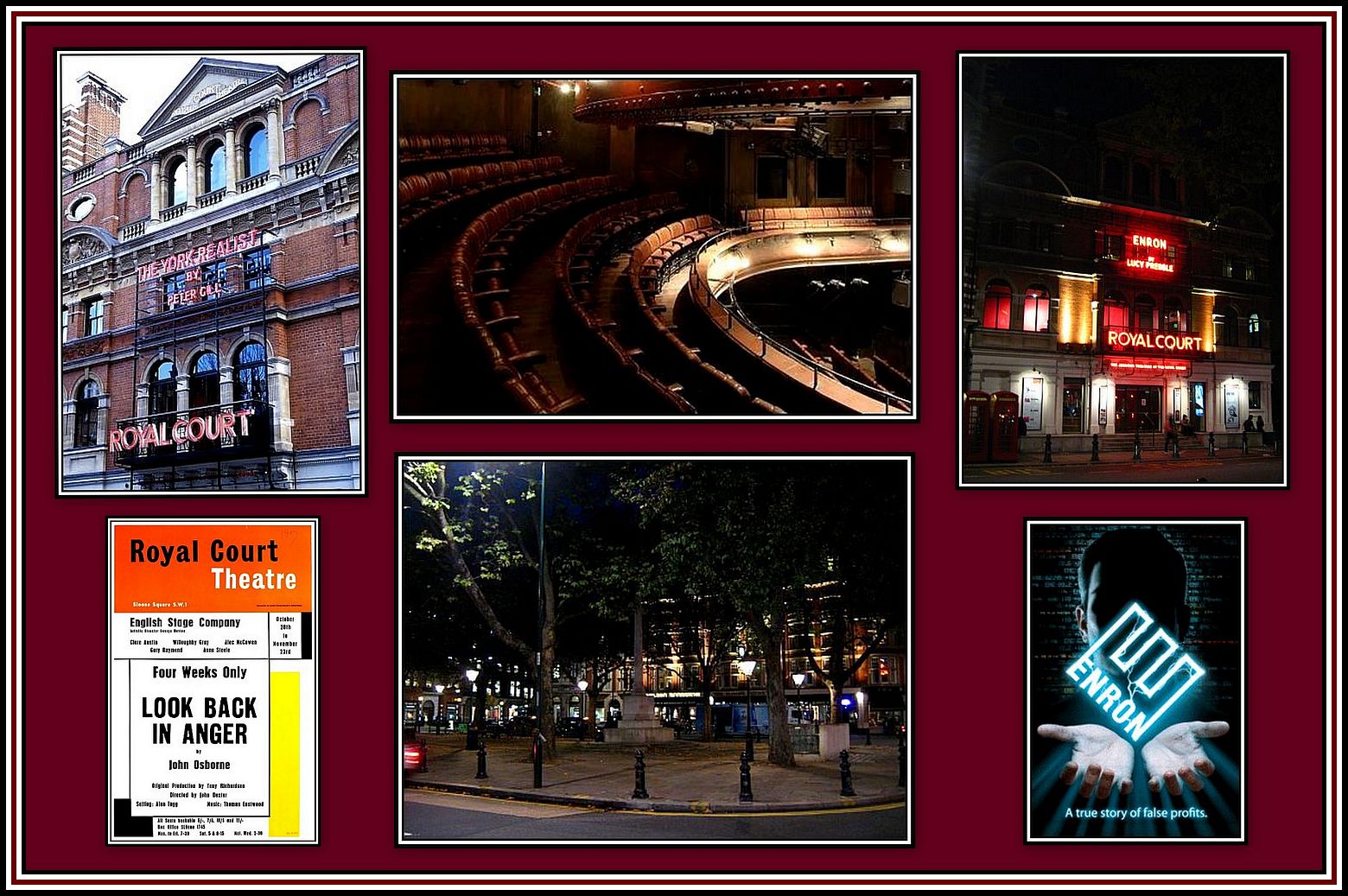 The Royal Court Theatre
The Royal Court Theatre
Upper Middle: The Circle; Lower Middle: Sloane Square
Also in 1927, Theodore Komisarjevsky produced a number of half-hour stage shows for presentation in the theatres of Sidney Bernstein. And so began an association that would prove most productive for both, and gave patrons to Mr. Bernstein’s theatres a true sense of grandeur.
By 1927, Mr. Bernstein was of the opinion that the Music Hall public is dying out and decided to convert the Empire Music Hall Edmonton and the Hippodrome Lewisham into cinemas. At the same time, he also decided to undertake improvements to a number of his cinemas and appointed Cecil Massey as architect, H.C. Fontaine as general manager and Theodore Komisarjevsky as Head of Art Direction for his fledgling circuit.
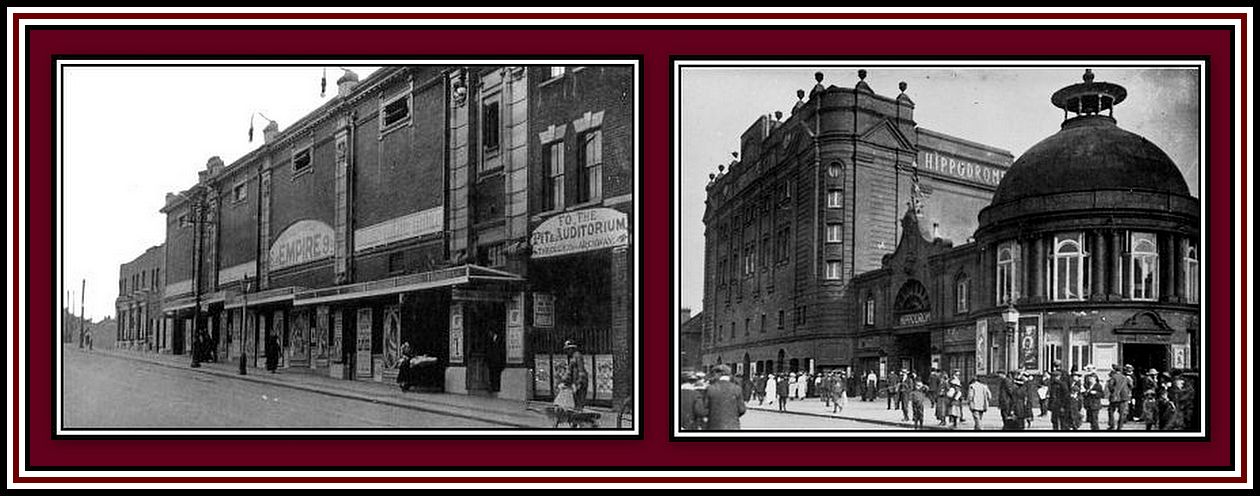 Left: Empire Music Hall, Edmonton; Right: Hippodrome, Lewisham
Left: Empire Music Hall, Edmonton; Right: Hippodrome, Lewisham
Mr. Bernstein’s announcement of his choice for Head of Art Direction owed much to his keen sense of showmanship. In true Barnumesque style, he advertised Monsieur Komisarjevsky as …… the world famous director of the Moscow Art Theatre …… and in 1927, he wrote in the re-opening programme of the Empire Willesden that ……
it took time to persuade this master of the theatre to come to England and design sets for Kinema stages, but eventually perseverance triumphed and his new masterpiece in stage craft is to be seen at the Willesden Empire Kinema ……
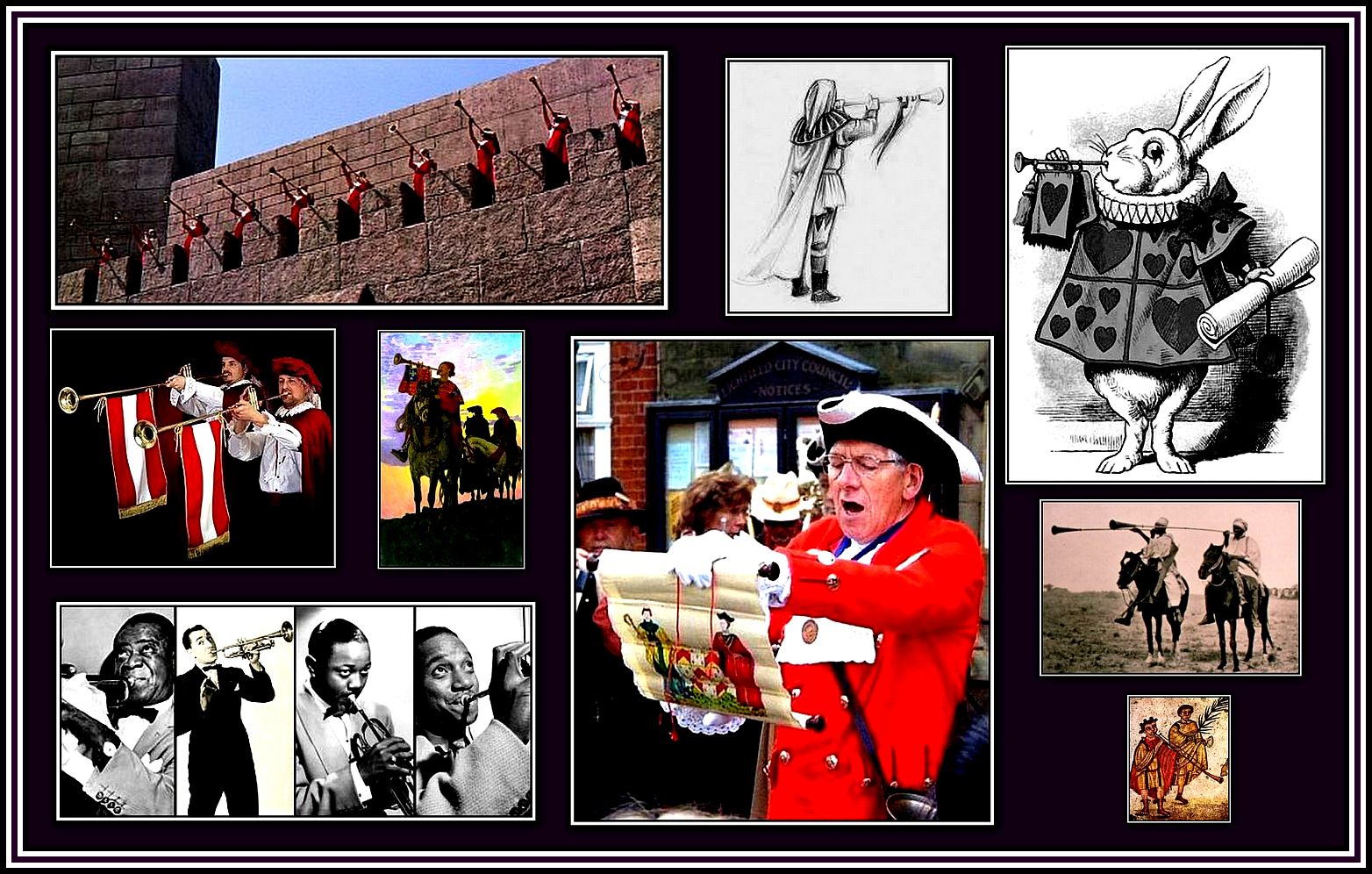 Click here to listen to The Ultimate Fanfare;
Click here to listen to The Ultimate Fanfare;
Click here for another fanfare and
Click here to hear ……. Oh Yea, Oh Yea, Oh Yea! and ……. here to hear the Town Crier
Evidently Mr. Bernstein chose to forget that Mr. Komisarjevsky came to England in 1919 and had already enjoyed fame especially with his presentations of Chekhov plays in 1925-1926, but no matter. I feel sure that the flamboyant Mr. Komisarjevsky probably enjoyed this example of hullabaloo!
As Head of Art Direction, Mr. Komisarjevsky began by overseeing the redecoration of the Empire Edmonton. The theatre was closed for one month and then reopened as a cinema and films were screened with thirty-minute live variety shows performed three times each day in support. Next he worked on the Empire Willesden where the theatre underwent more ambitious changes that included raising the roof so that a balcony and a new ceiling could be built. For this renovated theatre, Mr. Komisarjevsky designed a new colour scheme and new stage settings. He next designed novel colour scheme, as part of the refurbishment of the Rialto Enfield. According to Allen Eyes, his next work at the West Ham Lane Empire in Stratford where his decorative work, which included grilles on the side walls, was muted when compared to later efforts.
While undertaking these works in 1928, Mr. Komisarjevsky also managed to find the time to direct two plays in the West End and direct his film, Yellow Stockings.
-oOo-
As I have already said elsewhere, when it came time for Sidney Bernstein to build his first purpose-built theatre, he chose Theodore Komisarjevsky to be the Head of Art Direction. While other moguls were building cinemas in art deco style, Mr. Bernstein preferred the sense of grandeur that neo-renaissance architecture brought. And as a result, he stayed with Mr. Komisarjevsky.
The first purpose-built theatre for the Granada Theatre Circuit was the Granada Theatre Dover. It seems likely that Mr. Bernstein asked Mr. Komisarjevsky to design a Moorish theme for the interior decoration, which was to fit the new name chosen for the theatre.
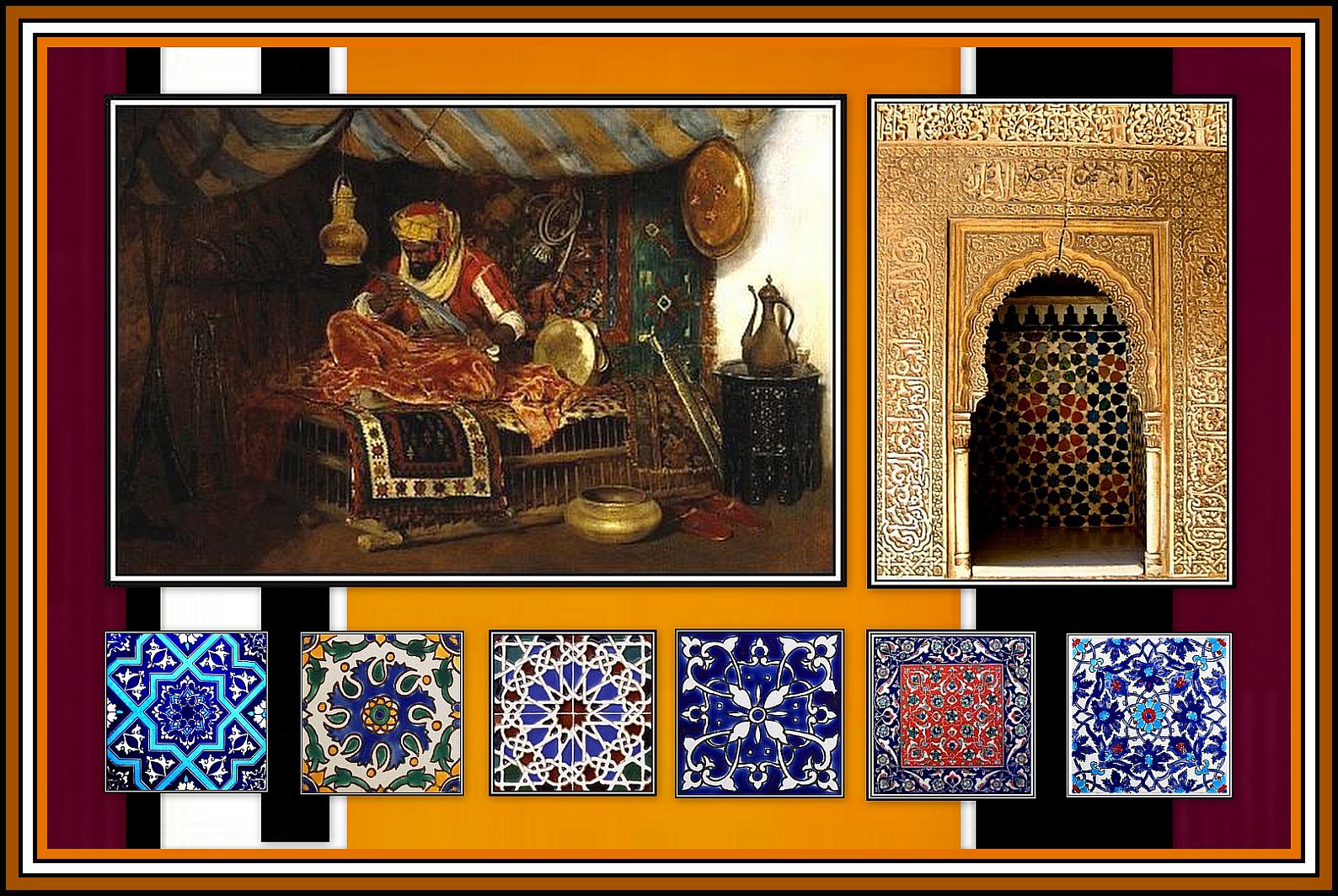 The Moorish Warrior by William Merritt Chase
The Moorish Warrior by William Merritt Chase
Top Right: a tile niche; Bottom: examples of Moorish Tiles
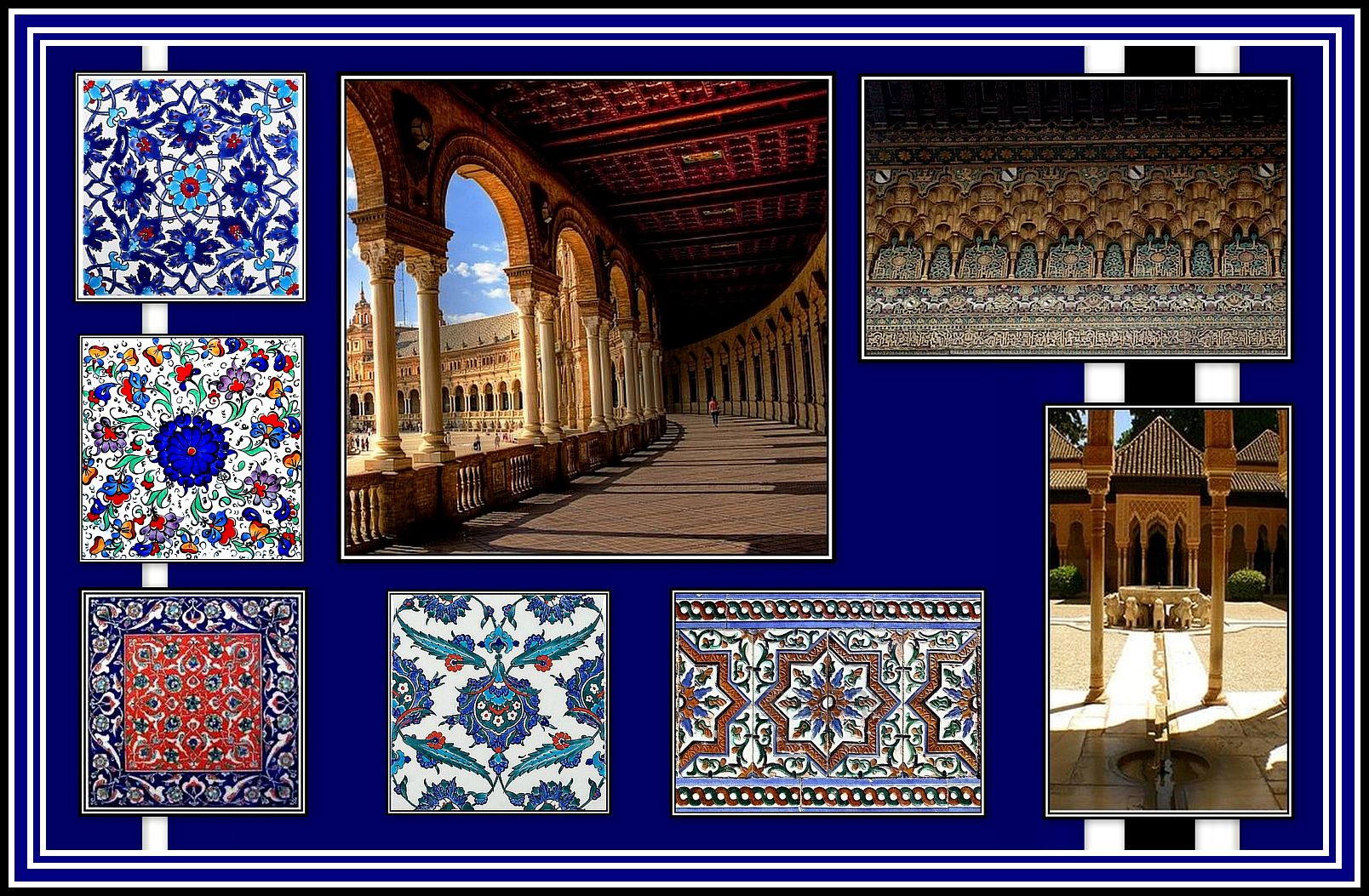 Examples of Moorish Architecture & Tiling
Examples of Moorish Architecture & Tiling
Mr. Komisarjevsky wrote an article for The Ideal Kinema (published on 13th February, 1930) in which he said that …… the masses come to the theatre tired out after hard work ……. and ….. the picture theatre supplies these folks with the flavour of romance for which they crave.
He went on to speculate that ….. the richly decorated theatre …. contributes to an atmosphere of sense of well-being of which the majority has hitherto only imagined.
Speaking of his design chosen for the auditorium, he wrote that he had …… endeavoured to give an impression of the Moorish style with slavishly copying the original Alhambra Palace in Granada ……
Mr. Komisarjevsky next apologises for being immodest (!!!) when he said …… I succeeded in producing an effect of architectural harmony of richness, and at the same time of restfulness.
(As much as I admire the talents and imagination of Mr. Komisarjevsky, I have to admit that I find him to be somewhat pompous here. I am especially amused by his use of the words …. masses ….. and folks! But then, he was a genius!)
-oOo-
Amid a huge advertising campaign that included a request via posters to the public to …. Start Saying Granada ….
The Granada Theatre Dover opened its doors to the public on the Wednesday afternoon of 8th January, 1930 amid much pomp and circumstance and showmanship with the finishing touches to the paintwork being done by Mr. and Mrs. Bernstein and Mr. Komisarjevsky!
The opening ceremony was unorthodox as already described and proved entertaining, but it was not until it was repeated at the opening of the second purpose-built Granada Theatre at Walthamstow on the evening of Thursday, 11th September, 1930 that it was received with tremendous enthusiasm by the audience judging by the volume and length of their applause.
The Granada Theatre Walthamstow was of a sufficient size to allow Mr. Komisarjevsky to design a …… spectacular and impressive cinema interior ……… which made it the first major purpose-built Granada Theatre.
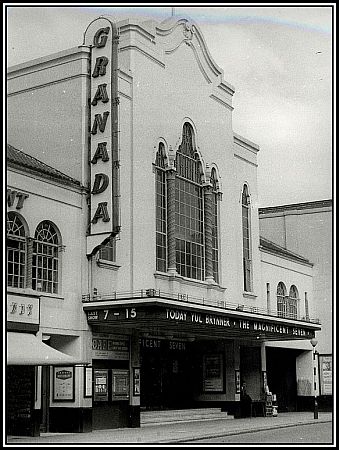 The Granada Theatre Walthamstow
The Granada Theatre Walthamstow
Mr. Komisarjevsky described his design for the Granada Theatre Walthamstow in the opening programme where he said ……… I have NOT attempted to copy any particular Moorish building …… and went on to say that he had tried ……. to give an impression of old Moorish architecture under modern conditions and surroundings.
-oOo-
While the Granada Theatre Walthamstow was being built, Mr. Bernstein became involved in the construction of the Phoenix Theatre on Charring Cross Road in London’s West End. Apparently, he had been asked to save the theatre as it was floundering. Mr. Bernstein agreed and asked Mr. Komisarjevsky to design a suitable interior and Cecil Massey to work with the original architect, Bertie Crewe on the exterior and auditorium shell.
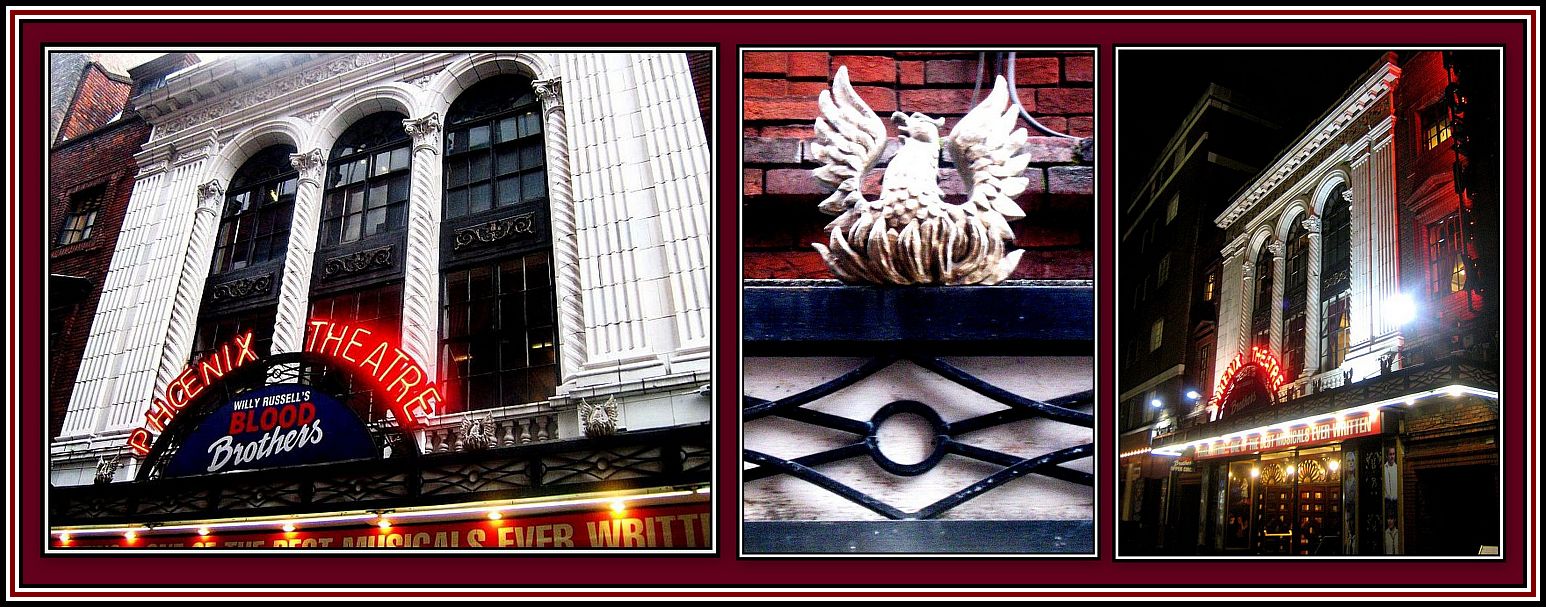 The Phoenix Theatre, London – exterior view
The Phoenix Theatre, London – exterior view
Mr. Komisarjevsky involvement with the Phoenix Theatre resulted in a design in High Renaissance style. He claimed that he was influenced by the works of Raphael, Giulio Romano et al and admitted to copying details from the courtyard of the Palazzo Boncompagni at Bolonga. The importance of his design for the Phoenix Theatre lay in the fact that a number of features found here were found later in what came to be known as the Standard Theatres of the Granada Theatre Circuit. These features include:
- The chandeliers present in the later Standard Granadas were of a similar design to those seen at the Phoenix Theatre;
- Round-headed mirrors used to decorate the walls of staircases in Standard Granadas were also a feature of the staircase leading to the Dress Circle of the Phoenix Theatre;
- The design of auditorium of the Phoenix Theatre was reproduced in Standard Granadas;
- The Prosenium Arch and running freeze was adapted in each Standard Granada;
- The side boxes of the auditorium of the Phoenix Theatre became decorative grillwork in the Standard Granadas; and
- The shallow circular ceiling dome over the front stalls of the Phoenix Theatre was reproduced in the Standard Granadas, but was mostly flattened out.
(These features will be discussed in depth in the section dedicated to The Phoenix Theatre, which will appear at a later time.)
One thing that was NOT reproduced in the Standard Granadas was the ceiling of radiating mirrors found at one end of the passage at the back of the stalls of the Phoenix Theatre.
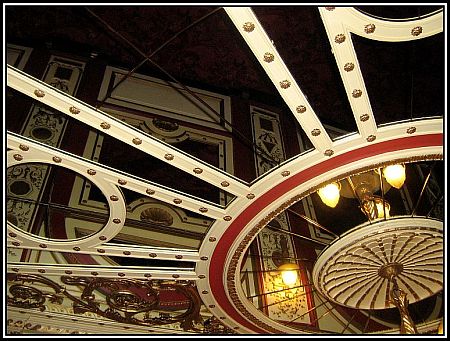 Mirrored Ceiling in the passage at the rear of the Stalls
Mirrored Ceiling in the passage at the rear of the Stalls
The Phoenix Theatre has been described as Mr. Komisarjevsky’s most concentrated and sumptuous work and in my opinion it is a memorial to his remarkable talents and imagination.
-oOo-
Despite my admiration for Mr. Komisarjevsky’s work at the Phoenix Theatre, which I found to be breathtaking, I believe that he reached the peak of his brilliance as Head of Art Direction with his work on the flagship theatre of the Circuit, the Granada Theatre Tooting and, to a slightly lesser extent, with the Granada Theatre Woolwich.
The auditorium of the Granada Theatre Tooting is very rich in decorative features. Mr. Komisarjevsky chose an ecclesiastical, continental Gothic style with images of medieval figures by Alex Johnstone from originals by Lucien LeBlanc.
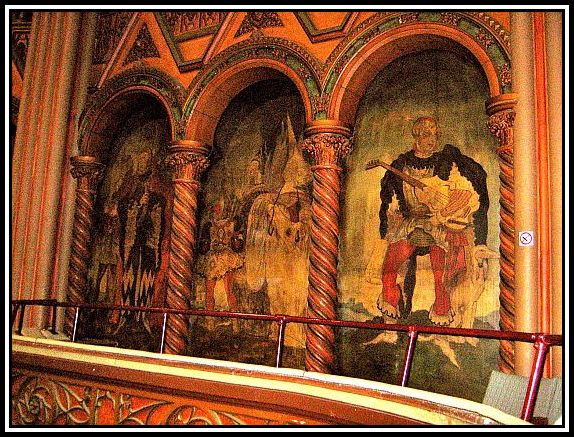 Murals – The Granada Theatre Tooting
Murals – The Granada Theatre Tooting
The reviews of the building at the time of opening were full of ecstatic complements about the design and, apparently at its opening, when the lights went up, the audience burst into enthusiastic spontaneous applause to show their appreciation. The decoration was apparently well-shown off by a light display during the opening ceremony.
-oOo-
Theodore Komisarjevsky, as Head of Art Direction and Cecil Masey, as architect, continued to work for the Granada Theatre Circuit on both new theatres and others that were in need of refurbishment. However, in 1932, when Sidney Bernstein took over the Regal Watford, he chose George Coles as architect, but stayed with Mr. Komisarjevsky as the interior designer. The cinema was closed for one month and the refurbished theatre was reopened to the public on Boxing Day 1932.
In 1933, both Messrs. Masey and Komisarjevsky were involved with the rebuilding of the Empire Edmonton, the erstwhile Music Hall where Marie Lloyd had given her last performance and which they had both been involved earlier with its conversion to a cinema. The theatre was closed on January 1933 and was rebuilt except for the walls and reopened on 28th August, 1933. Mr. Komisarjevsky, unlike Mr. Massey who designed a new exterior in traditional style, produced a design that was distinctly modern and futuristic and based on the Dutch Cubist style known as De Styl. This chosen style was in stark contrast to the Gothic-Moorish styles of the earlier theatres.
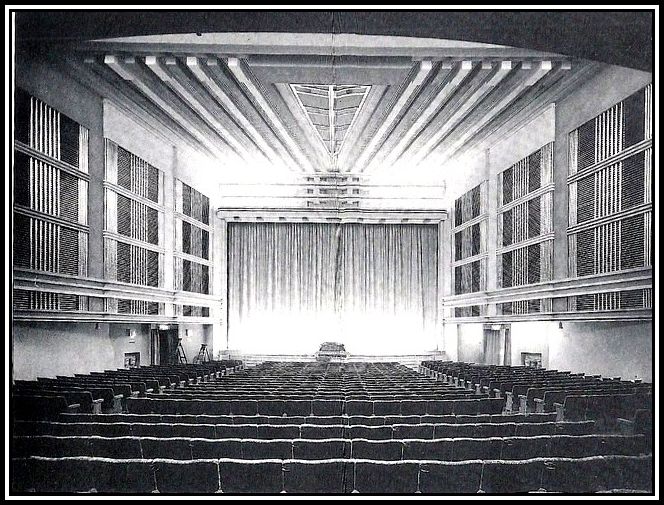 Interior of the Empire Theatre (later Granada) Edmonton
Interior of the Empire Theatre (later Granada) Edmonton
In 1936, Sidney Bernstein announced that he would be building a new series of eight theatres. This number was obviously fluid, as it increased to sixteen by October of that year. In fact, although plans for more may have been drawn up, only nine new theatres were built. Sadly (for me, that is!), plans for a Granada Theatre in Bow or Mile End were dropped.
Messrs. Massey and Komisarjevsky were involved in the building of the following Granada Theatres, which opened between 1936 and 1938 (these theatres will be discussed elsewhere):
- The Granada Theatre Wandsworth
- The Century Theatre Chaem
- The Granada Theatre Woolwich
- The Granada Theatre North Chaem
- The Granada Theatre Greenwich
- The Granada Theatre Harrow
- The Granada Theatre Clapham Junction
- The Granada Theatre Greenford
- The Granada Theatre Welling
It is interesting to note that Mr. Komisarjevsky did not receive any official credit in the published publicity for many of these Granada Theatres since his past work and plans were considered to belong to Granada and no longer to him. As a result, Granada Theatres may well have seen it as their right to do with it what they will.
-oOo-
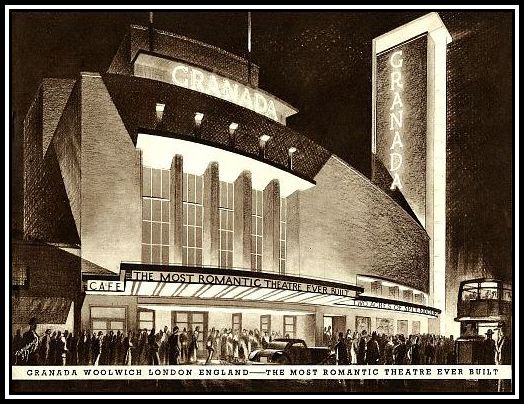 The Most Romantic Theatre Ever Built
The Most Romantic Theatre Ever Built
The Granada Theatre Woolwich opened on the 20th April, 1937 and, according to its souvenir programme, was The Most Romantic Theatre Ever Built. Although this theatre did not outclass the Granada Theatre Tooting, it was most certainly a glorious example of Theodore Komisarjevsky’s work and achieved the same impact on audiences. Apparently the original colour of the ceiling of the auditorium was green, which caused Messrs. Bernstein and Komisarjevsky some discontent when they saw it some seventy-two hours before opening. The colour was changed and the opening took place according to plan.
The Granada Theatre Woolwich is a glorious building with a number of panels with medieval figures painted by Vladimir Polunin and a Hall of Mirrors. Once again, Mr. Komisarjevsky chose an ecclesiastical, continental Gothic style to decorate the interior.
-oOo-
During the decoration of the Granada Theatre Clapham Common, Mr. Komisarjevsky was ill and undergoing treatment in Switzerland. As a result of his illness, he was not allowed to talk on the telephone and his instructions for the theatre had to be relayed via the doctor! He apparently also passed on last minute instructions from his sick bed for completion of the Granada Greenford.
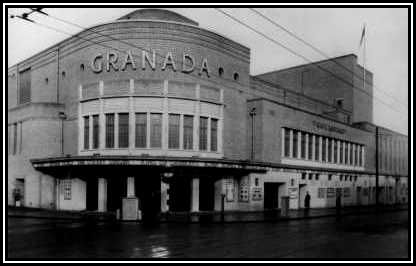 The Granada Theatre Clapham Common
The Granada Theatre Clapham Common
-oOo-
Although the Granada Theatre East Ham opened to the public in 1936, this theatre was not part of this scheme. This was a new theatre for the Denman Circuit, which was co-owned by Sidney Bernstein and Gaumont-British. There is evidence that there was some disagreement between the directors as to who would be responsible for designing the interior of this theatre. Eventually Mr. Komisarjevsky was asked to do it and he, once again, chose continental Gothic with ecclesiastical touches for its decoration.
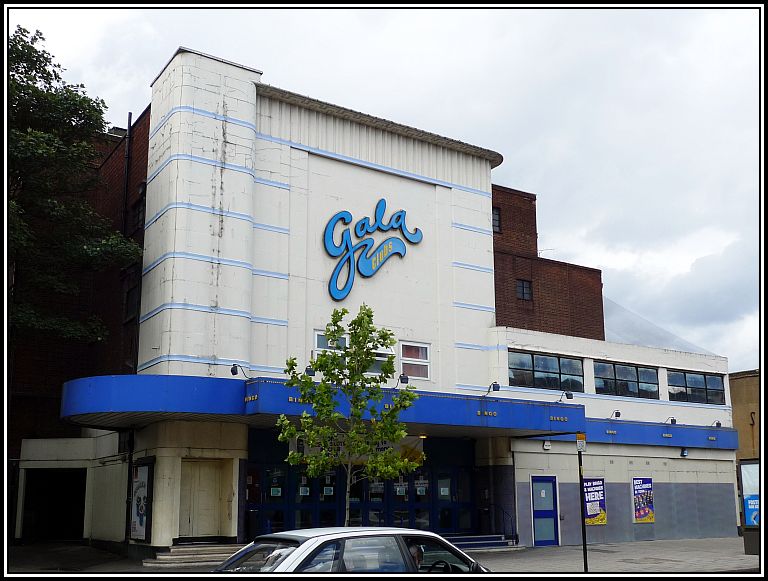 The Granada Theatre East Ham – shown here as a Gala Bingo Club
The Granada Theatre East Ham – shown here as a Gala Bingo Club
-oOo-
In 1938, the Granada Theatres at Welling and Slough opened and in 1939 just after war was declared, the last new theatre in the Circuit, opened in Kingston.
-oOo-
The interior decoration of the Granada Theatre Slough was based on work by Theodore Komisarjevsky and so I presume that he never actually visited the building. This theatre was the first and only purpose-built Granada Theatre that I ever visited, as the reader will later learn in another part of The Granada Theatre Circuit.
-oOo-
What follows comes from Norman Marshall, the theatre director and author of The Producer and the Play, who wrote that in 1939, when the Second World War broke out, Mr. Komisarjevsky was working in the United States. He was by now a British subject and apparently felt that he should return to England, so offered himself to the Entertainments National Service Association. However, he seemed unable to get back to Britain, and spent the rest of the war and his life in America, where he devoted himself mainly to lecturing and teaching.
Once Mr. Komisarjevsky moved to the United States, I cannot find any conclusive evidence that he ever worked again with Sidney Bernstein or The Granada Theatre Circuit. However, apparently in June 1949 while Mr. Bernstein was in Hollywood, he wrote to Mr. Komisarjevsky and sent him plans and photographs of the entrance halls and auditoria of some theatres that he had acquired along with the suggestion that he come to England and oversee the alterations. It is unlikely that Mr. Komisarjevsky came, as F.W. Mudd was the interior decorator for these improvements and remained in this position for the Circuit until 1957.
Although 1946 was a record year for cinema attendance in Britain, Mr. Bernstein built no additional purpose-built theatres. Immediately following the war, raw materials used for construction was employed in the building of houses and other necessary buildings and cinemas, theatres etc took a low priority on the list. By the time materials were available, the public were less inclined to go to the pictures and more inclined to remain at home and watch television. The age of the huge picture palace had tragically passed.
-oOo-
As I have said early, while living in the United States, Mr. Komisarjevsky married the dancer, Ernestine Stodelle, with whom he had two sons and a daughter. He died on 17th April, 1954 at Darien, Connecticut where he and his family had been living for sometime.
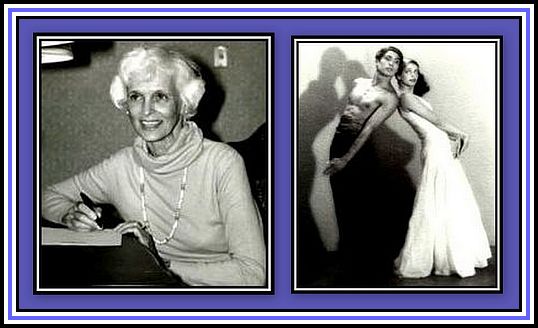 Left: Ernestine Stodelle; Right: with Jose Limón
Left: Ernestine Stodelle; Right: with Jose Limón
During his twenty years working in the English theatre, Norman Marshall says that Mr. Komisarjevsky had exerted more influence than any other producer on methods of direction, acting, setting, and lighting. On his death, Sir John Gielgud described him in a letter to The Times as …… a great metteur en scène, an inspiring teacher and a master of theatrical orchestration.
——oooOOOooo——
For those readers that may be wondering why I have not mentioned an event that befell the Komisarjevsky family in recent years ……. I have not done so since it has no bearing whatsoever on the glorious work of Theodore Komisarjevsky.
——oooOOOooo——
ACKNOWLEDGMENTS
Some of the history appearing here came from The Granada Theatres by Allen Eyles. I am grateful to Mr. Eyles for this great book.
I would also like to thank Mr. Adrian Hindle-Briscall for correcting the Russian spelling of Mr. Komisarjevsky’s name.
——oooOOOooo——
Click here to return to SIDNEY BERNSTEIN
——oooOOOooo——
Click here to return to CEIL AUBREY MASEY
——oooOOOooo——
Click here to return to PART FOUR: THE GIANTS THAT MADE GRANADA GREAT
——oooOOOooo——
Click here to go to PART FIVE: PREPARING TO BUILD GLORIOUS THEATRES
——oooOOOooo——
Click here to return to THE GRANADA THEATRE CIRCUIT Home Page
——oooOOOooo——
Click here to return to the TABLE OF CONTENTS
——oooOOOooo——

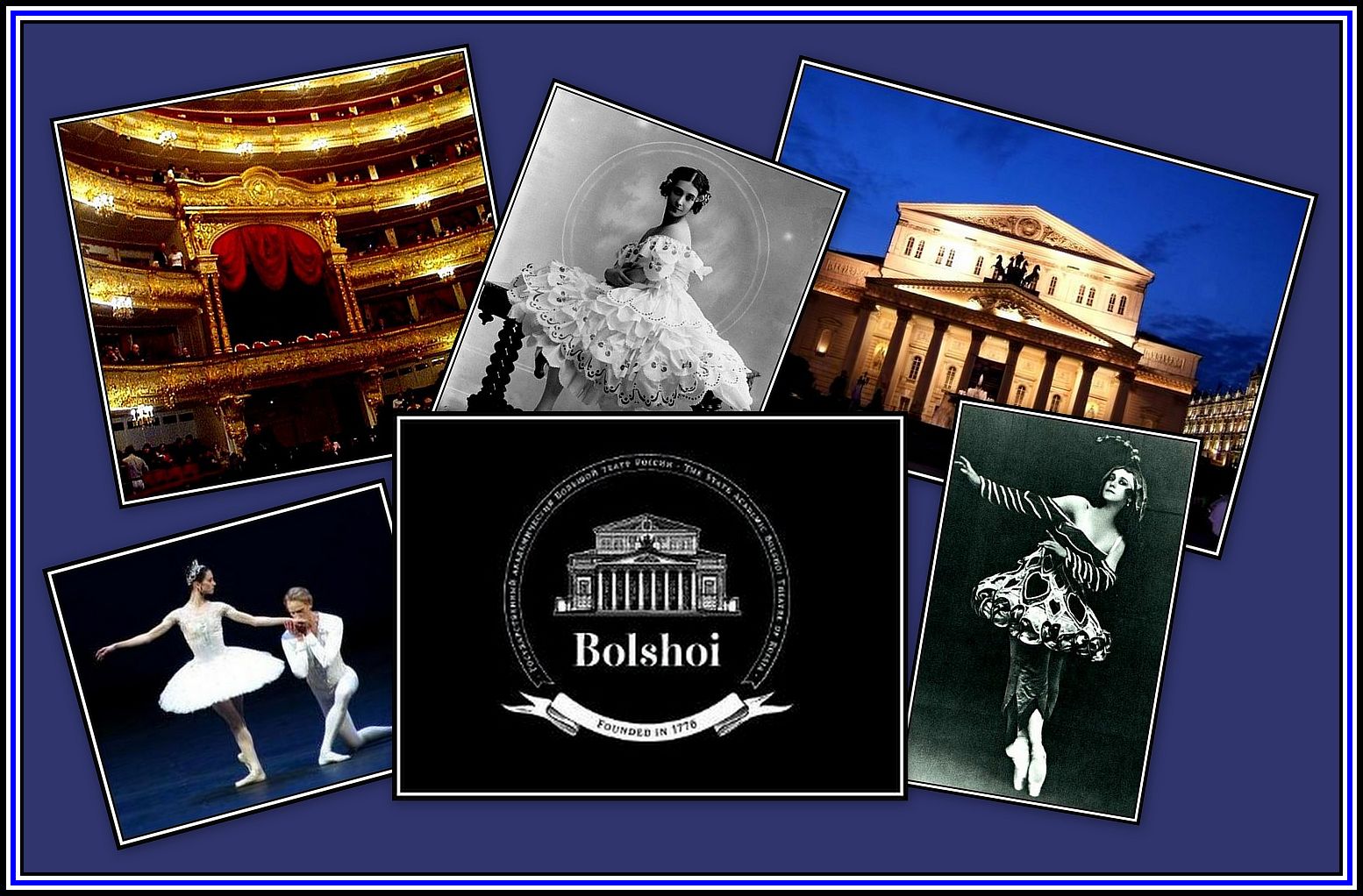
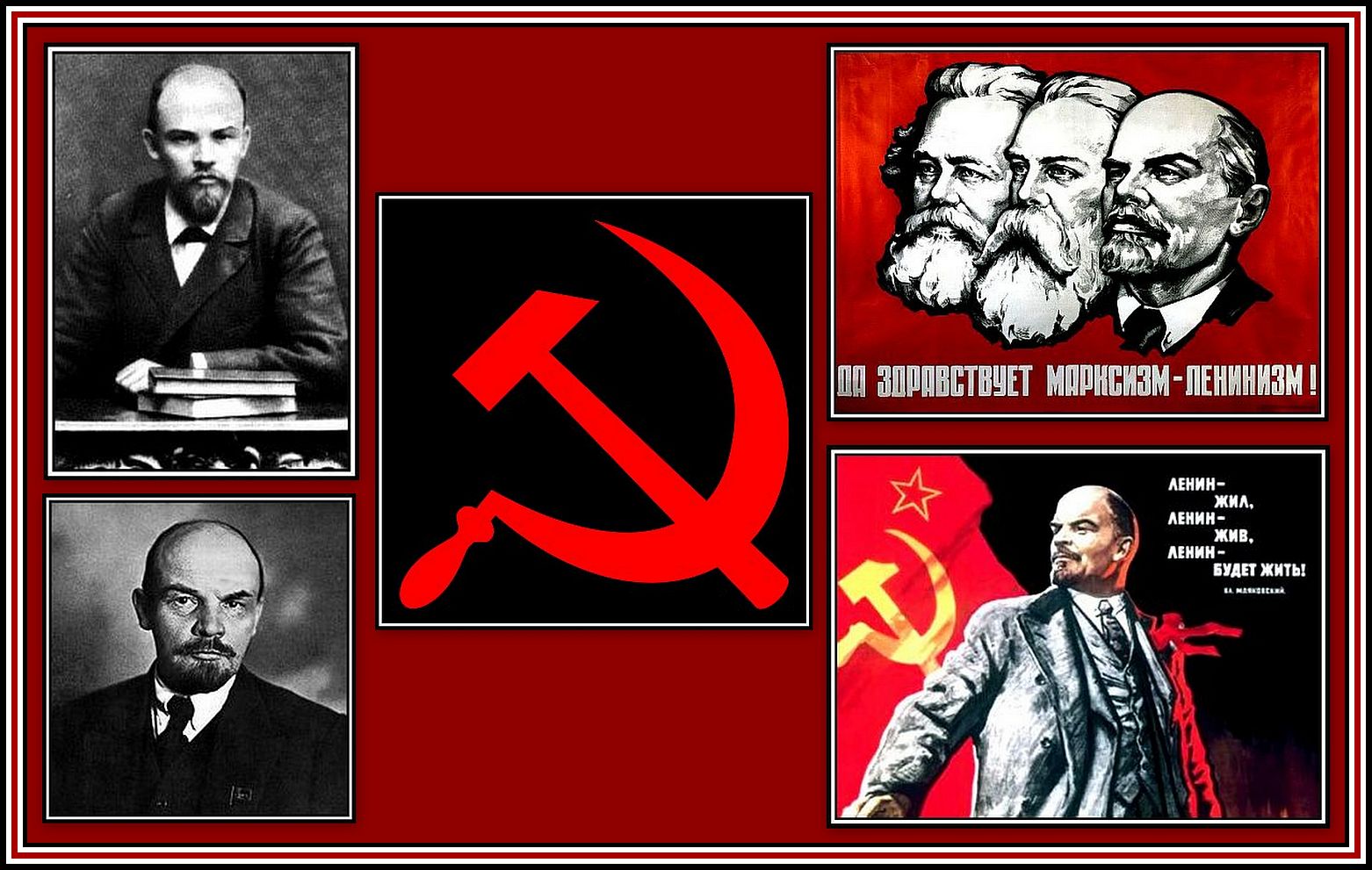
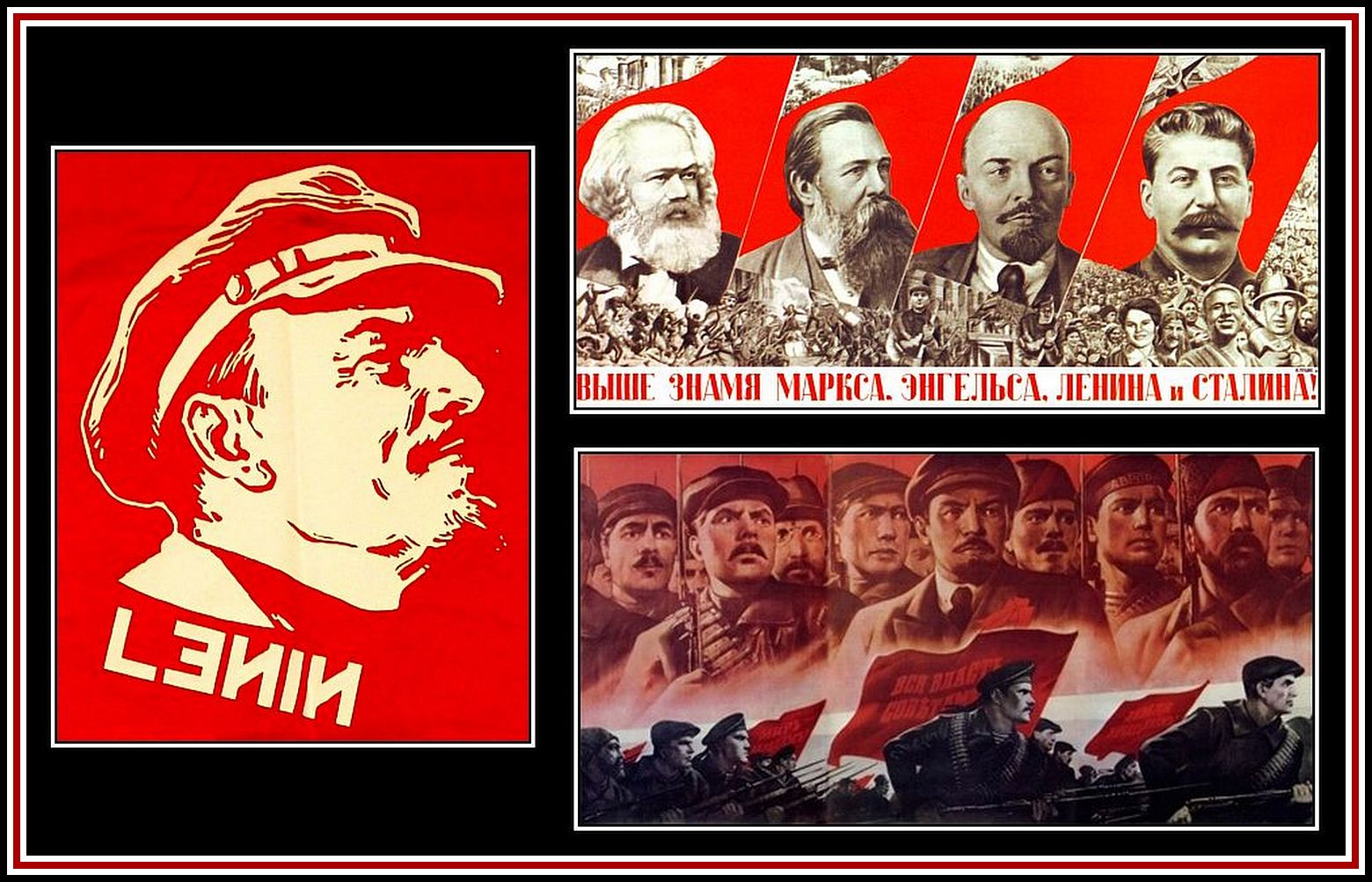
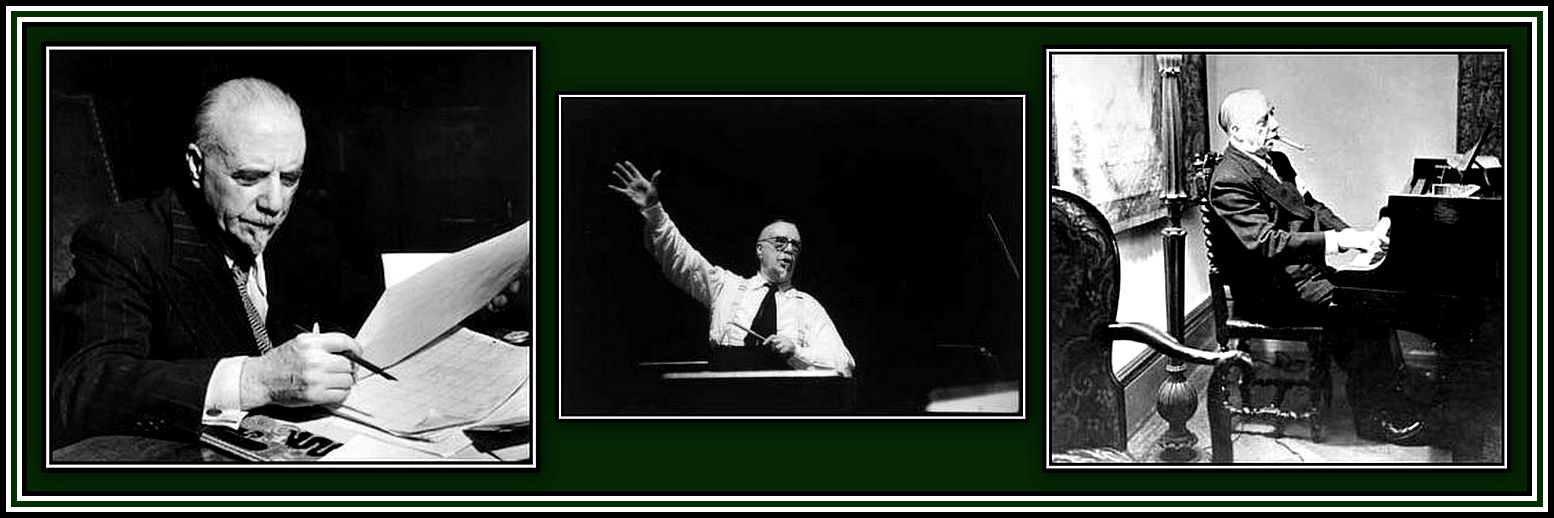
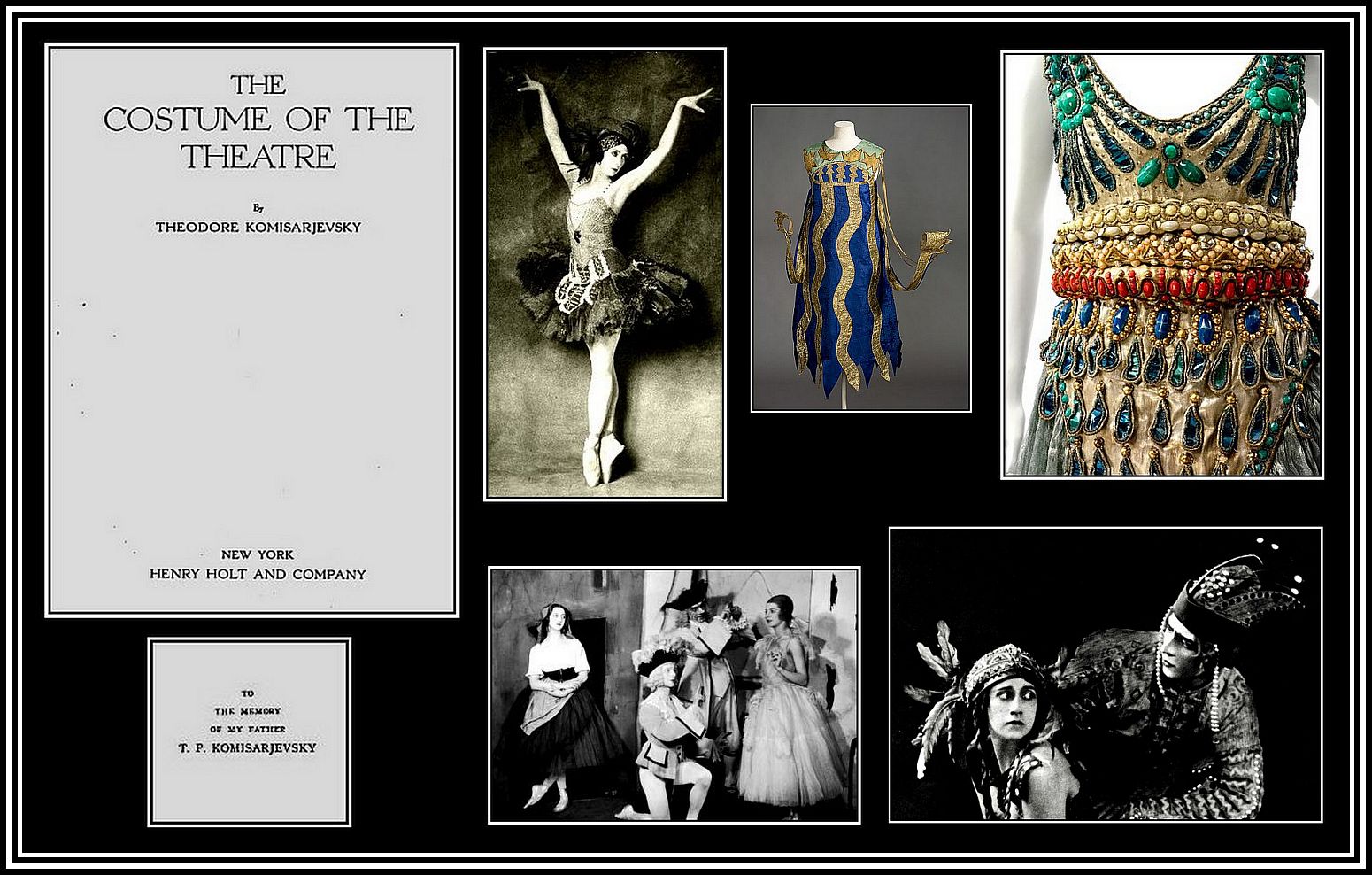
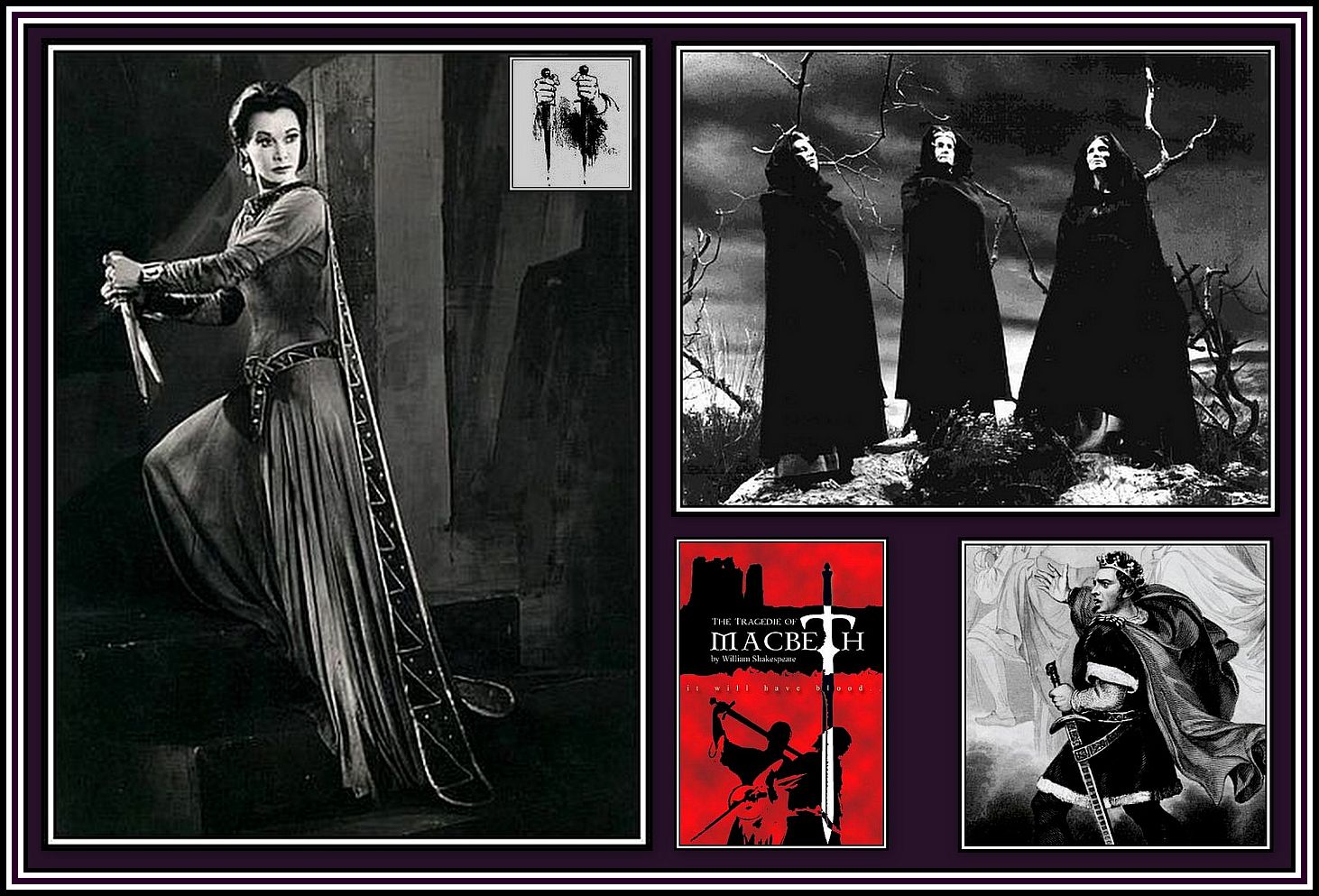
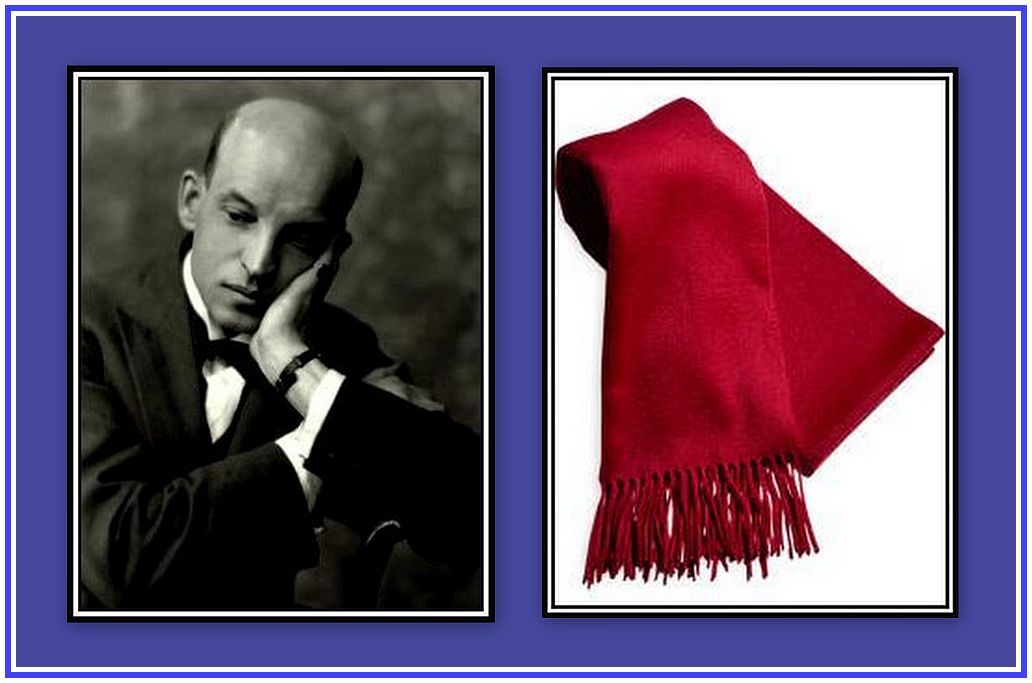
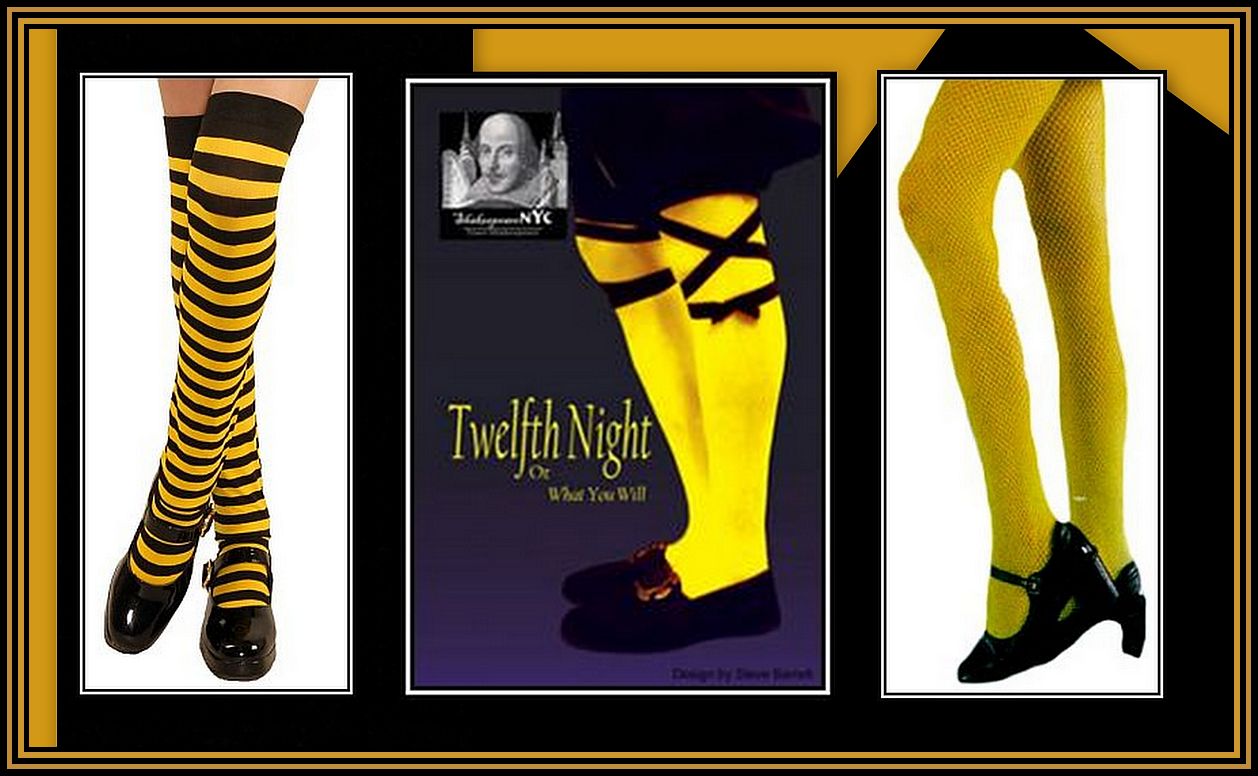

Hello! Your article is fascinating, however you have listed Vladimir Rosing as Vladimir Rosing Gherman. It should just be Vladimir Rosing. I know this to be true, because he is my father. These things live forever on the internet so if you can correct it, it will avoid future confusion for somebody.
Many thanks.
Mr. Rosing: Many thanks for pointing out my error regarding your father’s name. I have made the recommended changes. With kind regards. Charles S.P. Jenkins
THIS Kommisarjevsky was Фёдор Фёдорович Комиссаржевский in Russian. The name in Russian you give is his father’s.
The photo you print of his father (d.1905) cannot be of him as its style is of c. 1920. It’s also wrong on Wikipedia.